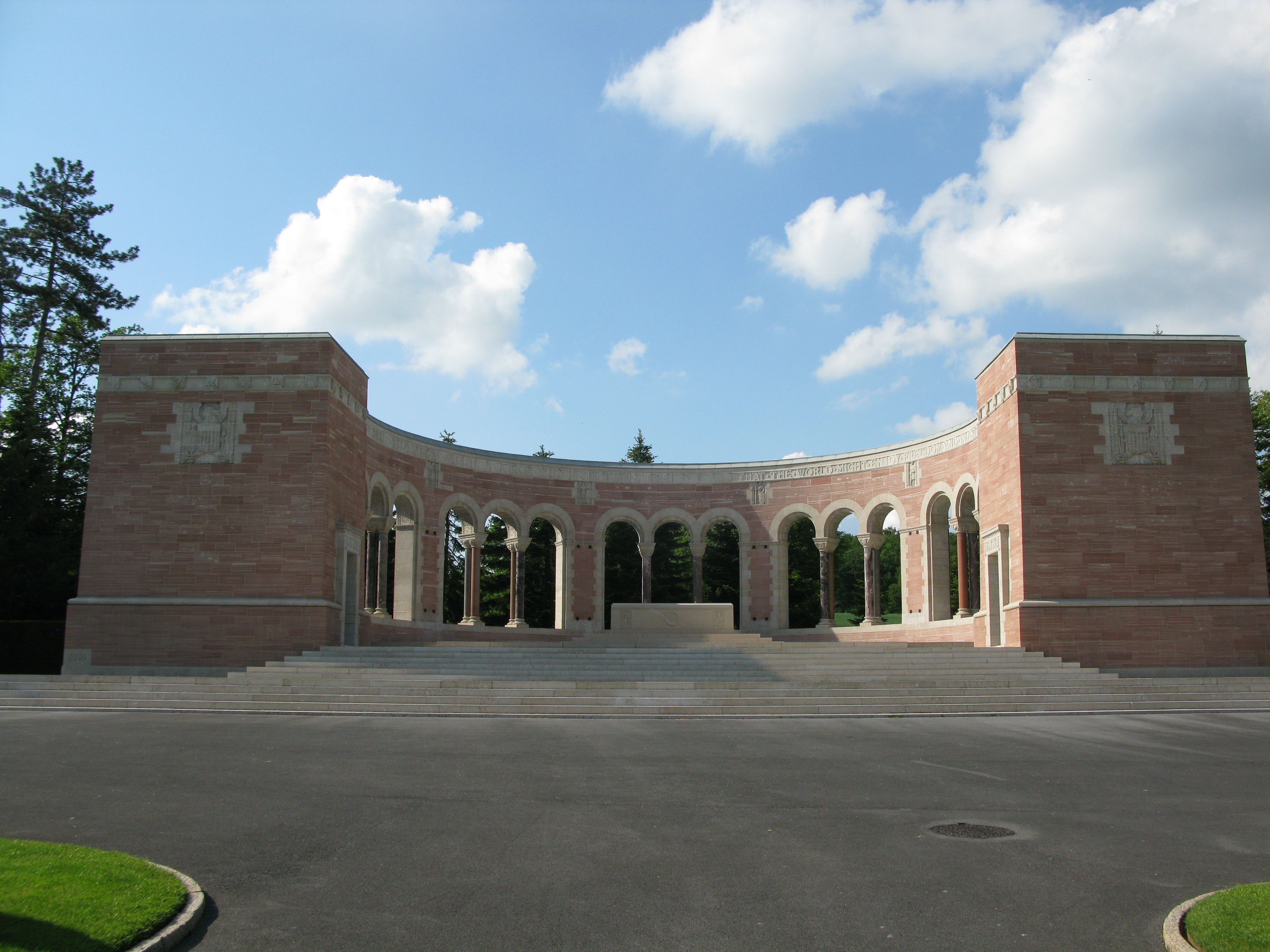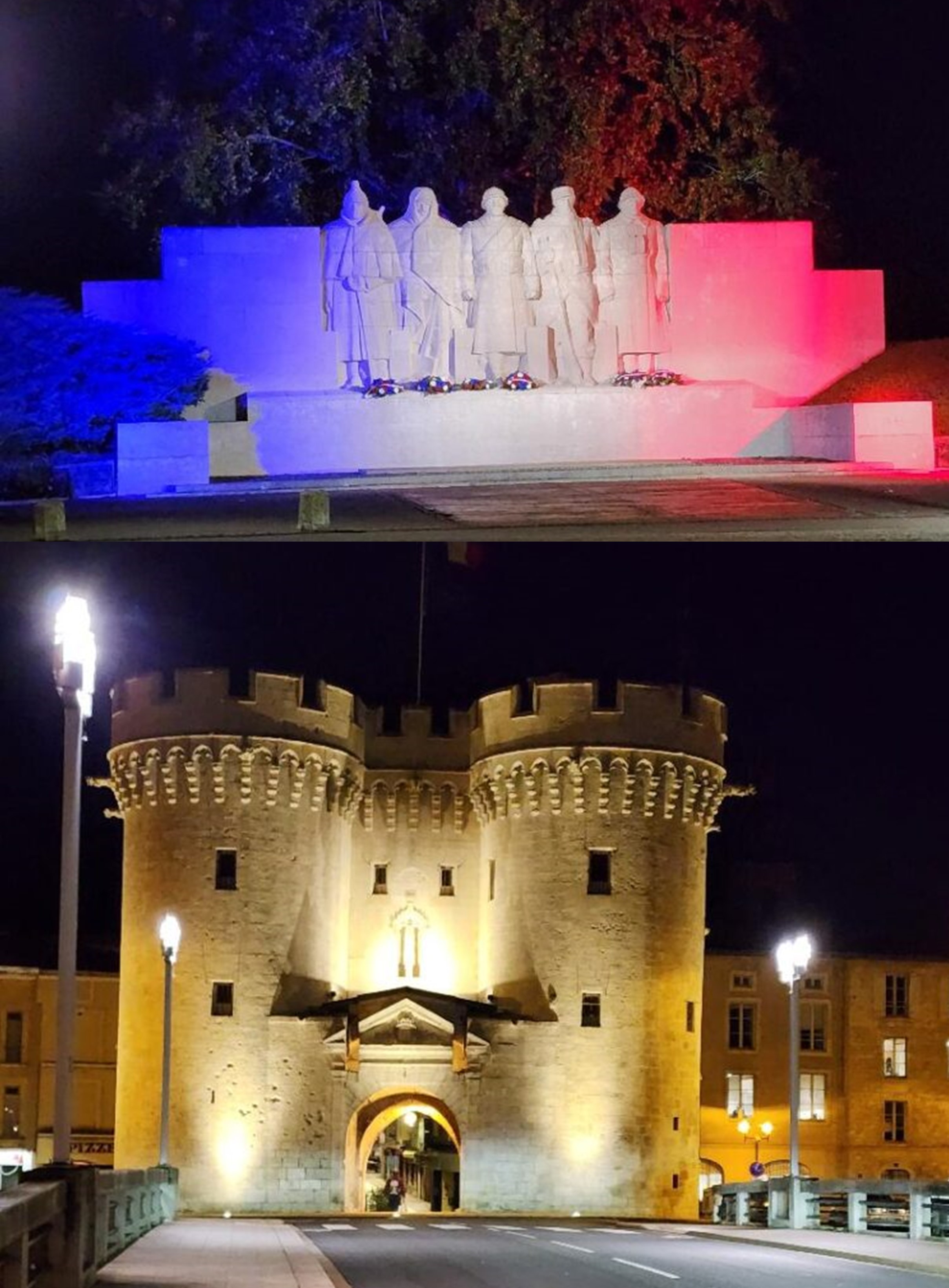Blog 12/09/22 - Jerry's WWI Journey with MHT
Jerry Hatfield has written up six Blog Posts for his fun “Jerry’s Journeys” from his travels with MHT to France for the World War One (WWI) Battlefields & Armistice (Veteran’s) Day Tour! We have reprinted Jerry's Journeys – Travel the world with Jerry, Linda, and their friends! six of his days during the November WWI tour.
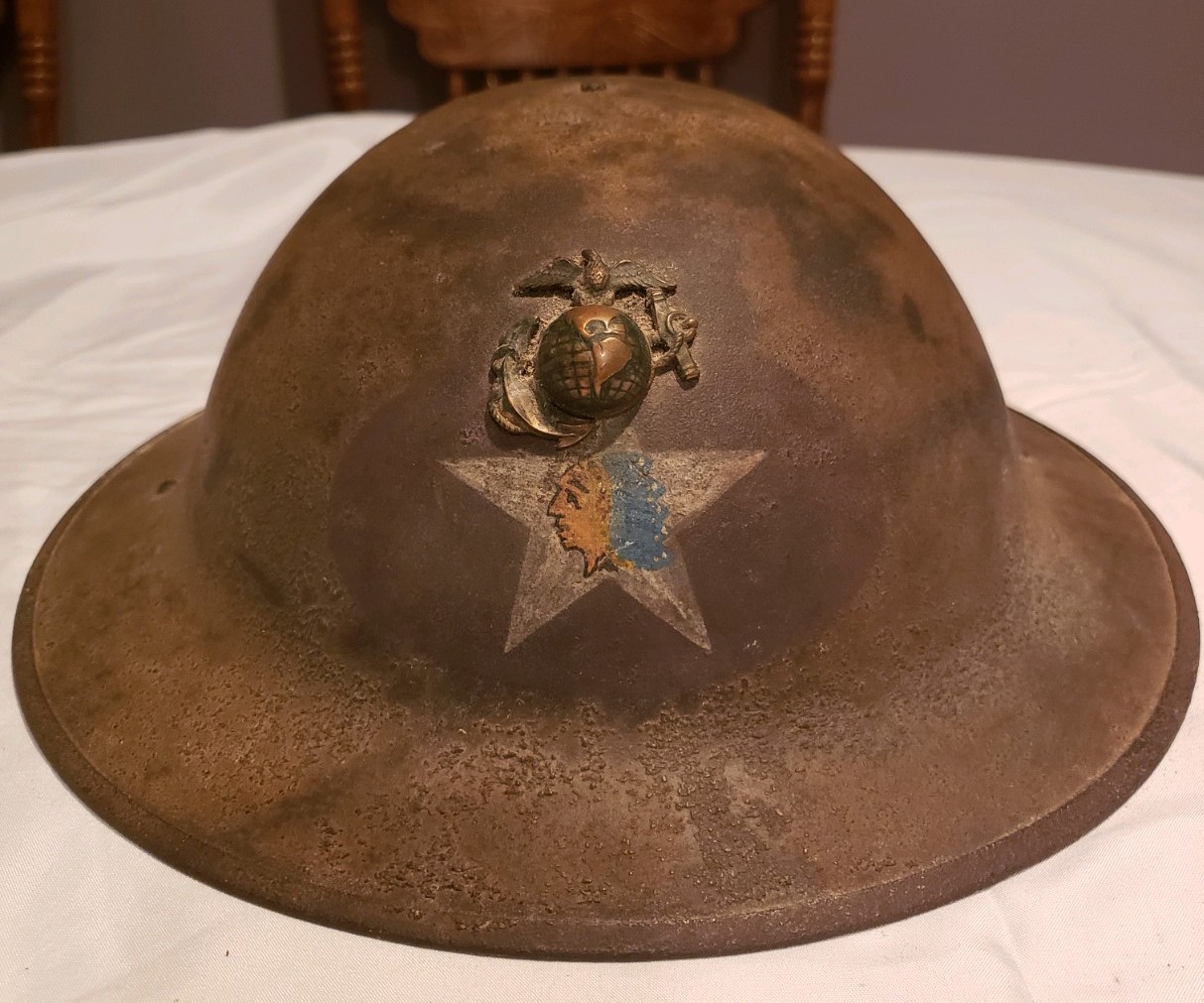
#1) Knights of the Air - 11/06/2022
(Jerry) As an Army Aviator, our first stop on our walk-through history was special to me. I am proud to have served my country as an Army helicopter pilot in Vietnam. As an American combat pilot, I was excited about starting my WWI tour at the birthplace of American combat aviation. I felt a connection with our visit to the Lafayette Escadrille Memorial today.
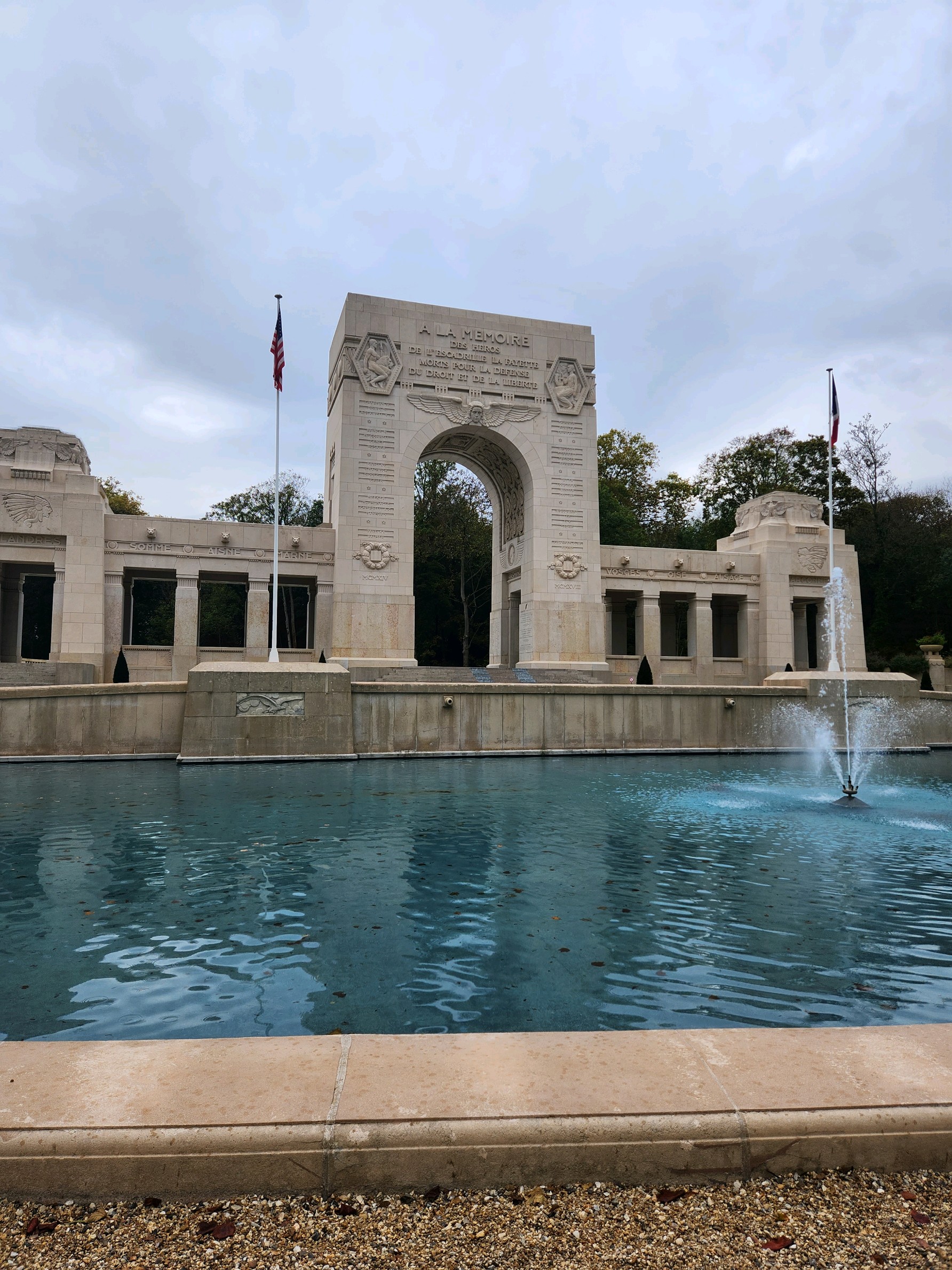
The Lafayette Escadrille Memorial Cemetery commemorates the birthplace of American combat aviation and serves as a symbol of the Franco-American comradeship during World War I. This site honors the American volunteer pilots who flew with French squadrons during the Great War. When the war erupted in Europe in 1914, the United States was neutral and did not enter the war for another 3 years. This did not keep a large number of Americans from volunteering their service to France. More than 200 Americans flew with the French squadrons during the war. In 1916 the French government created a squadron composed of American pilots. On April 20, 1916 the first unit constituting American flyers was placed on front-line duty. These aviators fought in the Battle of Verdun and the Somme Offensive, establishing a reputation for daring maneuvers and highly effective skills during these epic conflicts. Many of these pilots transferred to the U.S. Army Air Service after the U.S. entered the war. As a combat pilot, I feel our lineage can be traced back to the American pilots that flew for France in WWI.
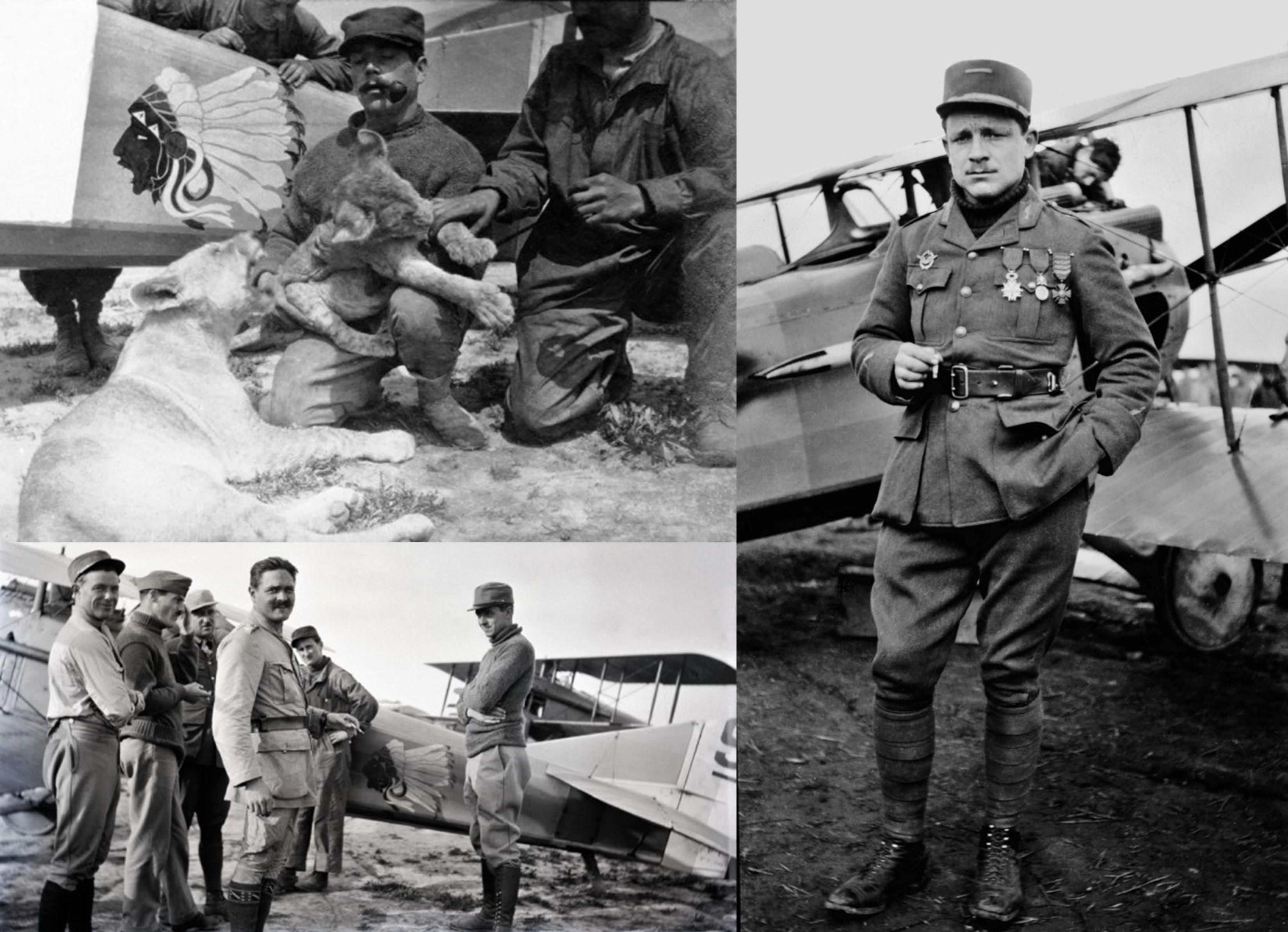
Clockwise: The Lion Mascots “Whiskey” & “Soda”; Raoul Lufbery the lead Ace with 16 air victories; some of “The Valiant 38”
Over 200 American pilots flew for the French, not all were in the Lafayette Escadrille. We should remember and honor them, not only for what they did for France, but also what they did for the United States. [Editor Note – The most identifiable feature of the Lafayette Escadrille was the emblems the pilots painted onto the sides of their biplanes. While displaying the Stars and Stripes was out of the question due to U.S. neutrality, the fliers used an easily identifiable American symbol, an Indian warrior in full headdress. Imperial German aviators who saw this insignia immediately knew they were facing an “Amerikanische Piloten.” The first artistic effort the squadron adopted was a Seminole Indian image patterned from an ammunition box logo. Later, two of the more talented U.S. pilots re-designed it to appear as a fiercer Sioux warrior that many said resembled Hunkpapa Lakota Indian Chief Sitting Bull.
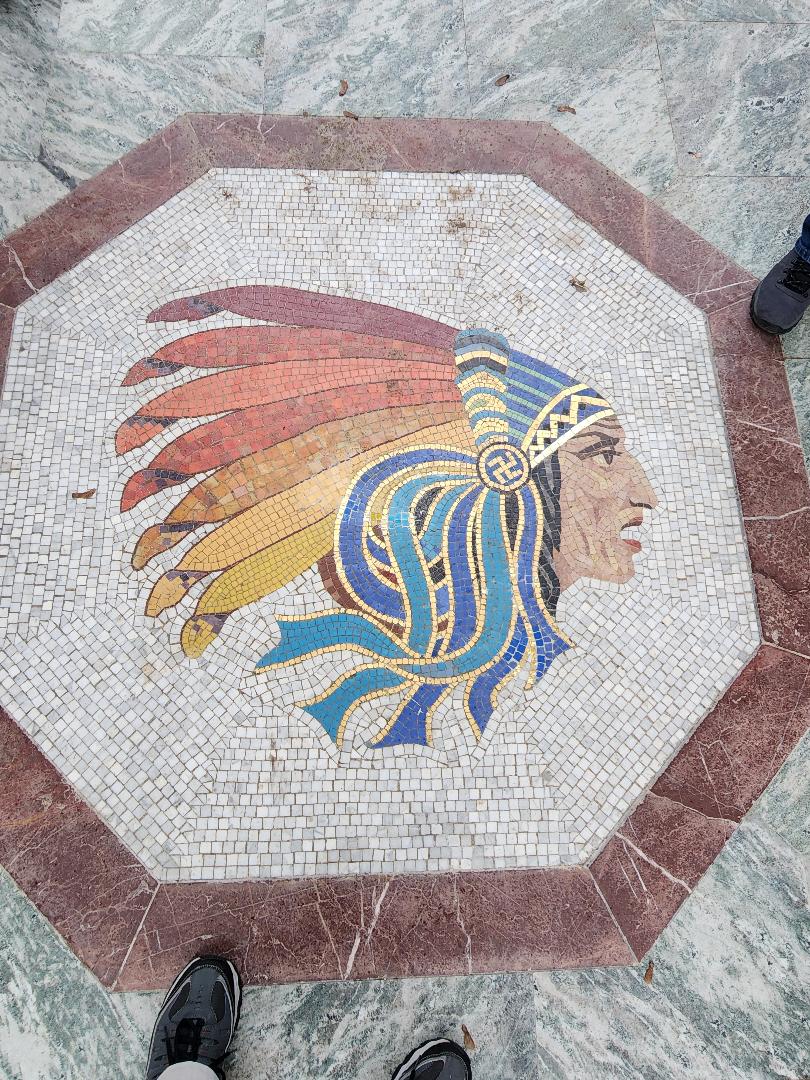
This tour will take us to several World War One battlefields and cemeteries. We won’t be able to cover them all. Due to the enormity of the area the conflict covers, visiting all the sites is impossible. You should have a better understanding of the enormous cost in lives and property that resulted from this war.
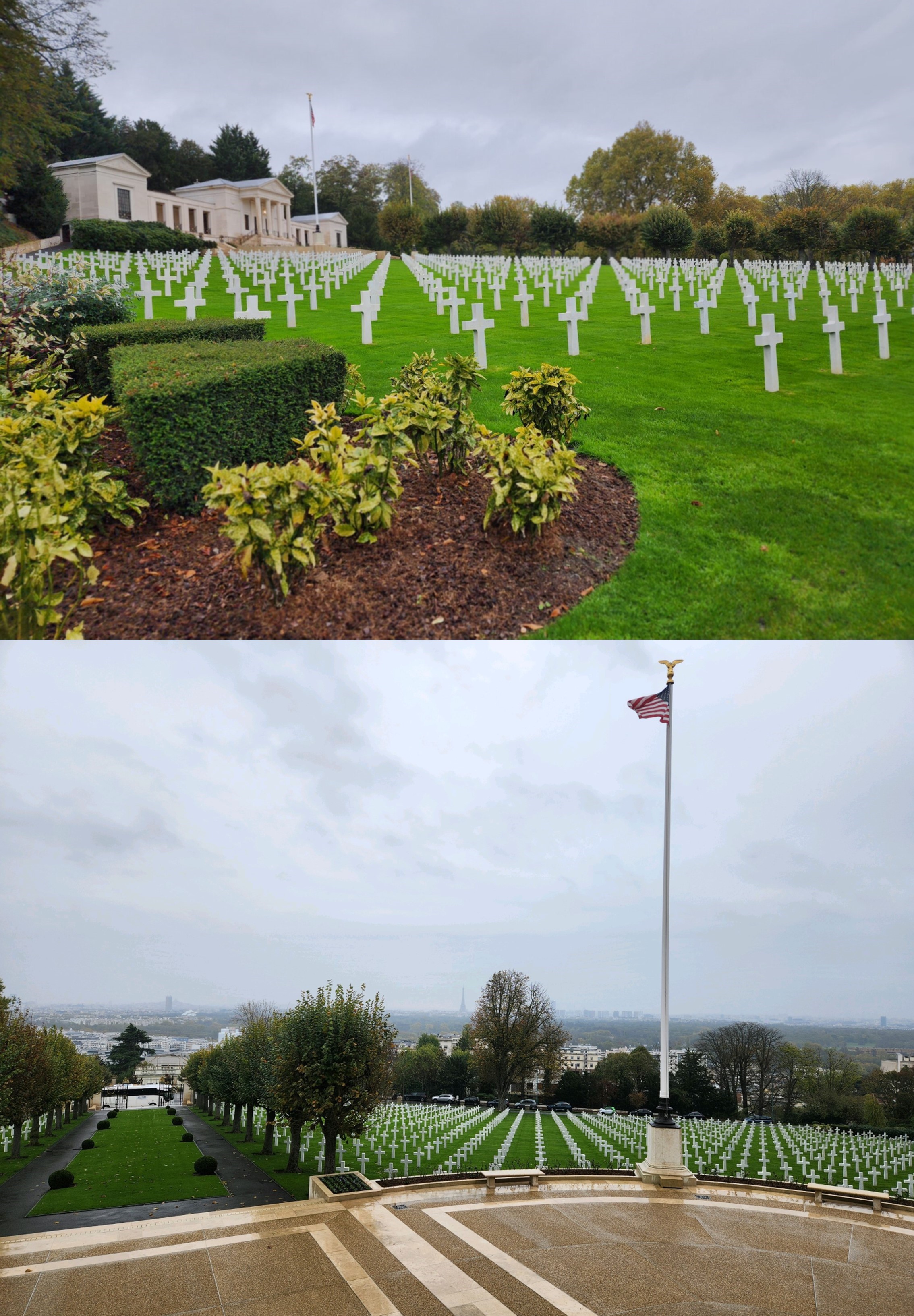
Next on our schedule today was the Suresnes American Cemetery. Originally a WWI cemetery, the Suresnes American Cemetery and Memorial just outside Paris now shelters the remains of U.S. dead of both world wars. The 7.5-acre cemetery contains the remains of 1,559 Americans who died in WWI and 23 unknown dead of World War II (WWII.) Suresnes Cemetery also serves as the final resting place for a number of U.S. civilians that passed while serving the American Expeditionary Force (AEF) in Europe. Many of their deaths was due to the Spanish Flu Pandemic that swept Europe in 1918 to 1919…another tragic event in a tragic war.
We left Paris and travelled to a small village from the Middle Ages by the name of Pierrefonds for lunch. The village also has a castle from the Middle Ages that was constructed in the 12th century. The name of the castle is Chateau de Pierrefonds. Napoleon I [Bonaparte] bought the castle in 1810 for under 3,000 Francs [$1.46M today] In 1850, Napoleon III of France ordered the castle be restored. This work began in 1857 and I think it continues today. There was scaffolding around one side of the castle.
Our last stop today was the American Battlefield Monuments Commission’s Oise-Aisne American Cemetery and Memorial. This cemetery contains the graves of 6,012 American soldiers, Marines and sailors who died while fighting in this vicinity during WWI, 597 of which were not identified, as well as a monument for 241 Americans who were MIA during battles in the same area and whose remains were never recovered. Included among the soldiers here who lost their lives is poet Joyce Kilmer.
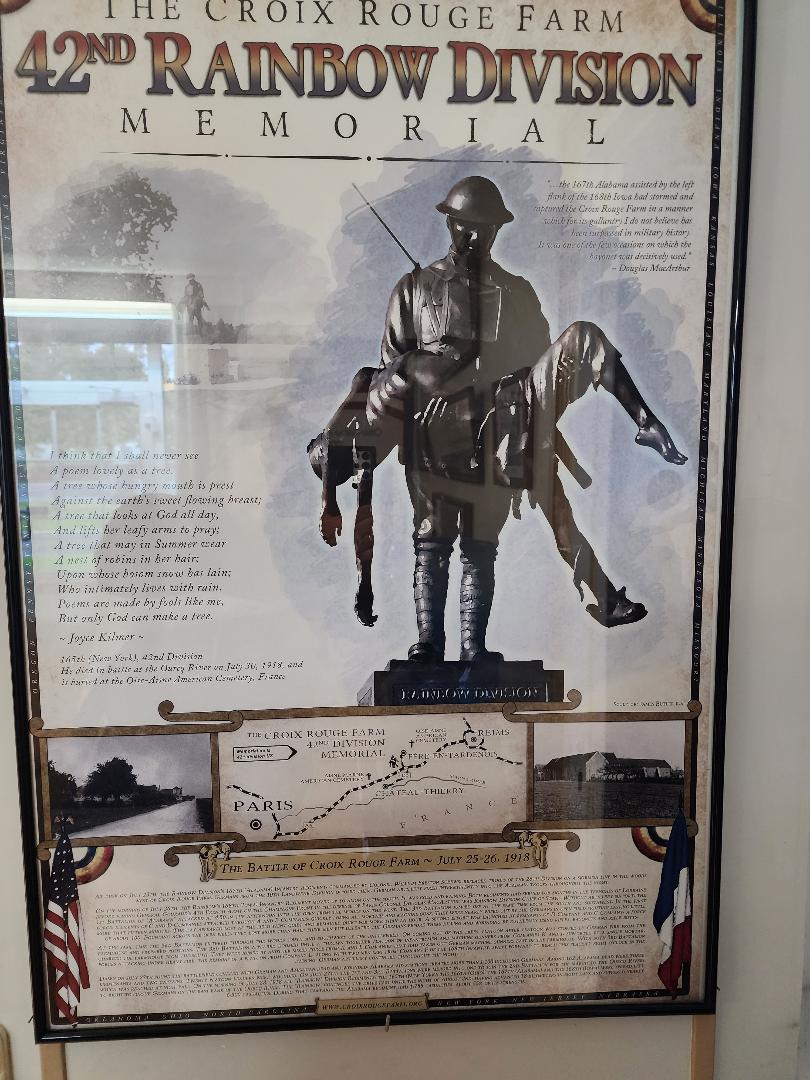
The 167th Alabama Regiment fought a major battle near here, The Battle of the Croix Rouge Farm. Nimrod Frazer, from Montgomery, wrote a book about this battle, “Send the Alabamians.” His father fought in this battle…a great book. One last thing about this cemetery, I think most people my age remembers Pvt. Eddie Slovik. Did you ever wonder what happened to him after his execution? Private Eddie Slovik (1920–1945) the only American soldier executed for desertion during WWII is there. A graveyard for former soldiers that were dishonorably discharged and executed for crimes committed during World War II, referred to as Plot E, is nearby. [Editor - Plot E is approximately 100 meters away from the main cemetery and is a separate, hidden section which currently contains the remains of 94 American military prisoners, "the dishonored dead", all of whom were executed by hanging or firing squad under military authority for crimes of murder and rape committed during or shortly after WWII. Their victims were 26 fellow American soldiers (all murdered) and 71 British, French, German, Italian, Polish and Algerian civilians (both male and female) who were raped or murdered. Plot E is detached from the main four cemetery plots for the honored dead of World War I. It is located across the road and deliberately hidden from view, inside a 100×50 feet oval-shaped clearing surrounded by hedges and hidden in thick forest. Officially, Plot E does not exist: it is not mentioned on the American Battlefield Monuments Commission website or in any guide pamphlets or maps. The plot is accessible only through the back door of the superintendent's office. One cemetery employee described Plot E as a "house of shame" and a "perfect anti-memorial"]
End of a long day. Headed for Reims….
#2) Blanc Mont Battlefield - 11/07/2022
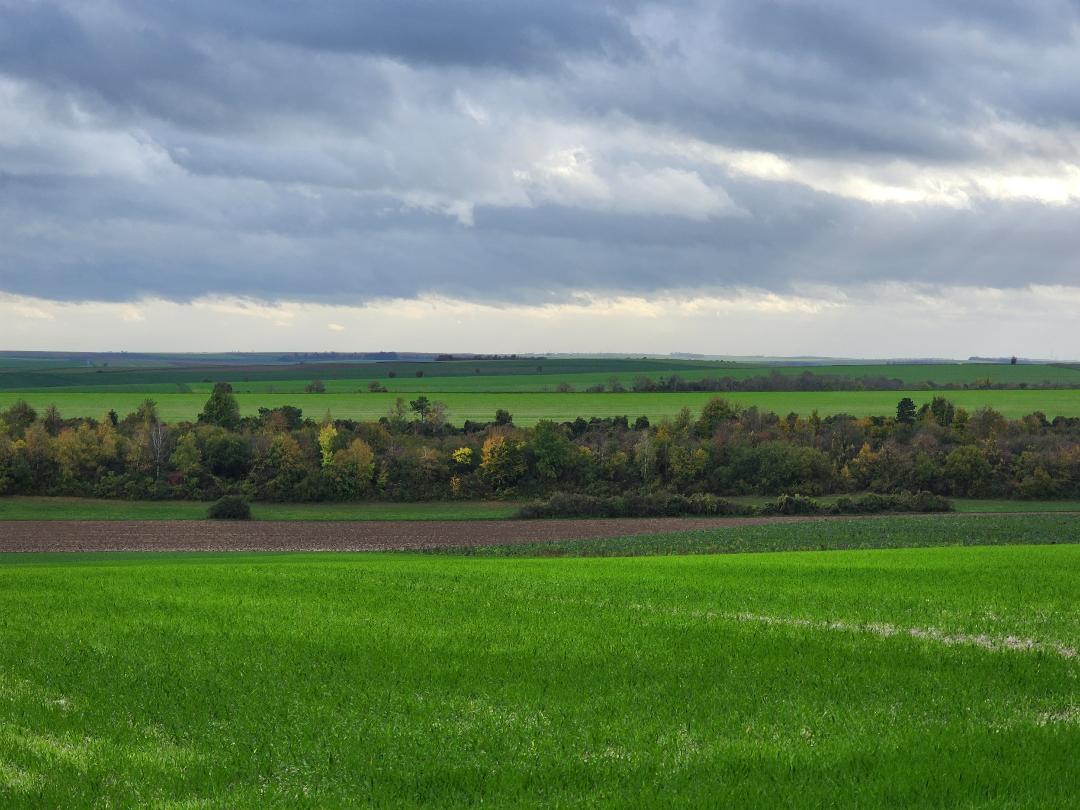
We arrived in Reims last night, but before we checked into our hotel, we stopped by the Notre-Dame de Reims Cathedral. The church was illuminated and was gorgeous. Reims saw its early beginnings around circa 80 BC. It became a major city in the Roman Empire. It is the home of the Mars Gate. This gate, dating back to the 3rd Century, is the only remaining of four Roman gates that allowed entry into the city. Another feature of historical significance is the Notre-Dame Cathedral. There was a church built on this site around 250 to 300 AD. The current structure was built in the 13th century. Much has happened, not only to the city, but also to the church through the years. The city and the cathedral were seriously damaged in WWI. The church was used as a hospital for wounded French soldiers and later for wounded German soldiers. Reims was near the frontlines. From 1914 to 1918 the church was struck by more than 300 artillery shells. There are still restoration projects ongoing today to repair the damage. Going forward, Reims was the Supreme Headquarters Allied Expeditionary Force (SHAEF) of General Dwight Eisenhower, US Army. Generaloberst (Colonel General) Alfred Jodl of the German Wehrmacht surrendered to Eisenhower at the end of World War II (WWII.) So, we took some photographs.
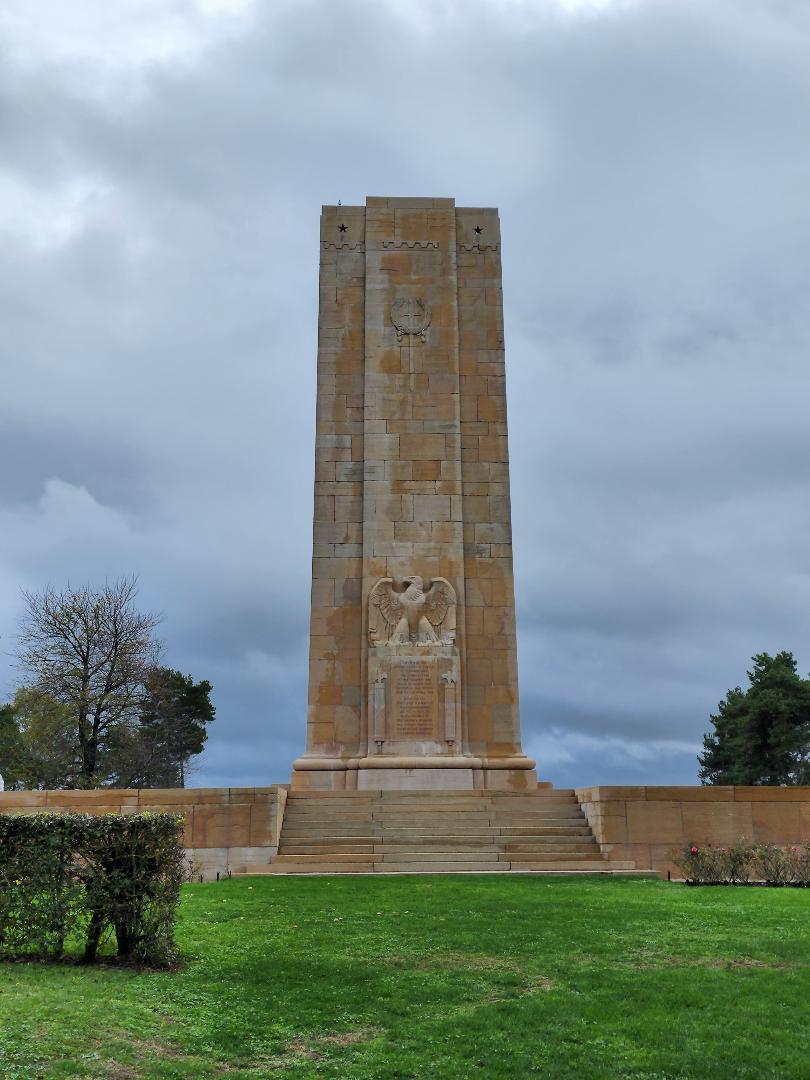
Our drive this morning took us along the French-German frontline. Our first destination was the Blanc Mont Battlefield. This is where the US Marines fought a costly battle with the Germans before seizing the Blanc Mont ridge. This battle was from 3 October to 10 October, 1918. We lost over 7,800 Marines and soldiers, killed and wounded. This was a significant victory for the AEF. This battle is often overlooked when discussions of WWI battles are brought up, but it was thought to have been the most skillfully executed American divisional attack of WWI. On the morning of October 10, the Germans started withdrawing to the Aisne River. The stalemate had been broken. We walked the ground under the tutelage of historian SSG Steven Girard, U.S. Army (Ret.)
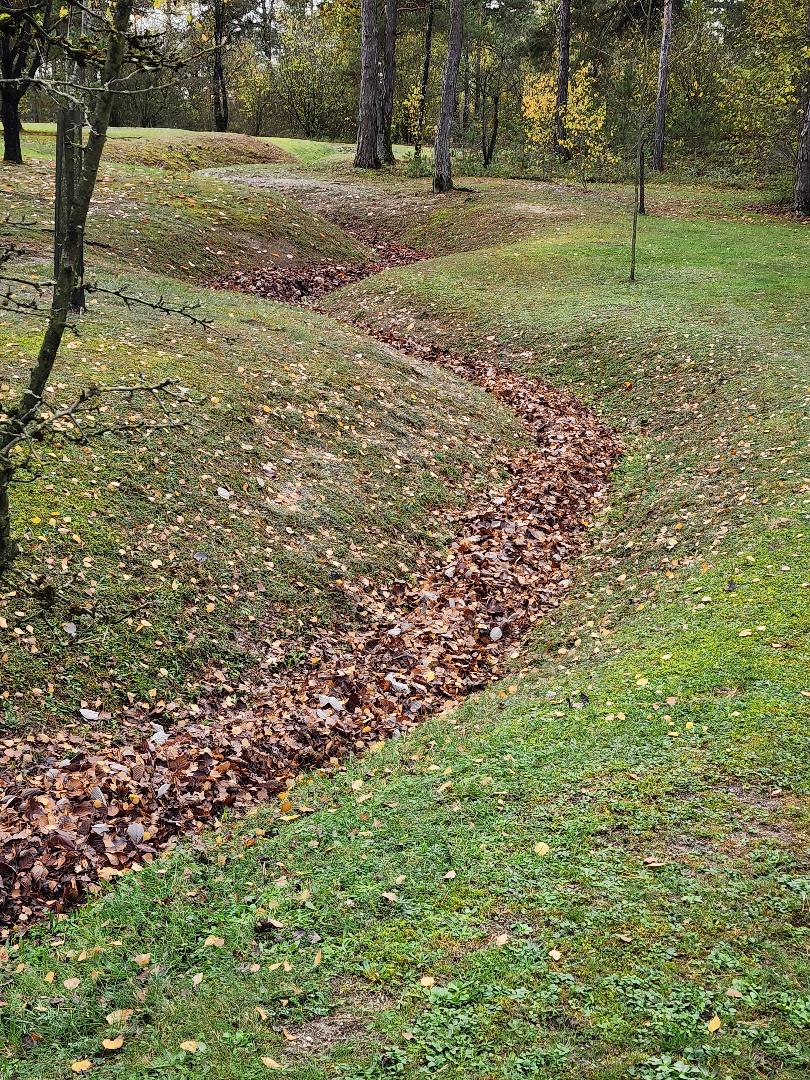
His explanations of the battle, not only of the maneuver elements, but the stories of individual actions brought the battle alive. We walked the ridge, walked in the German trenches, we were educated. I just thought I knew about WWI.
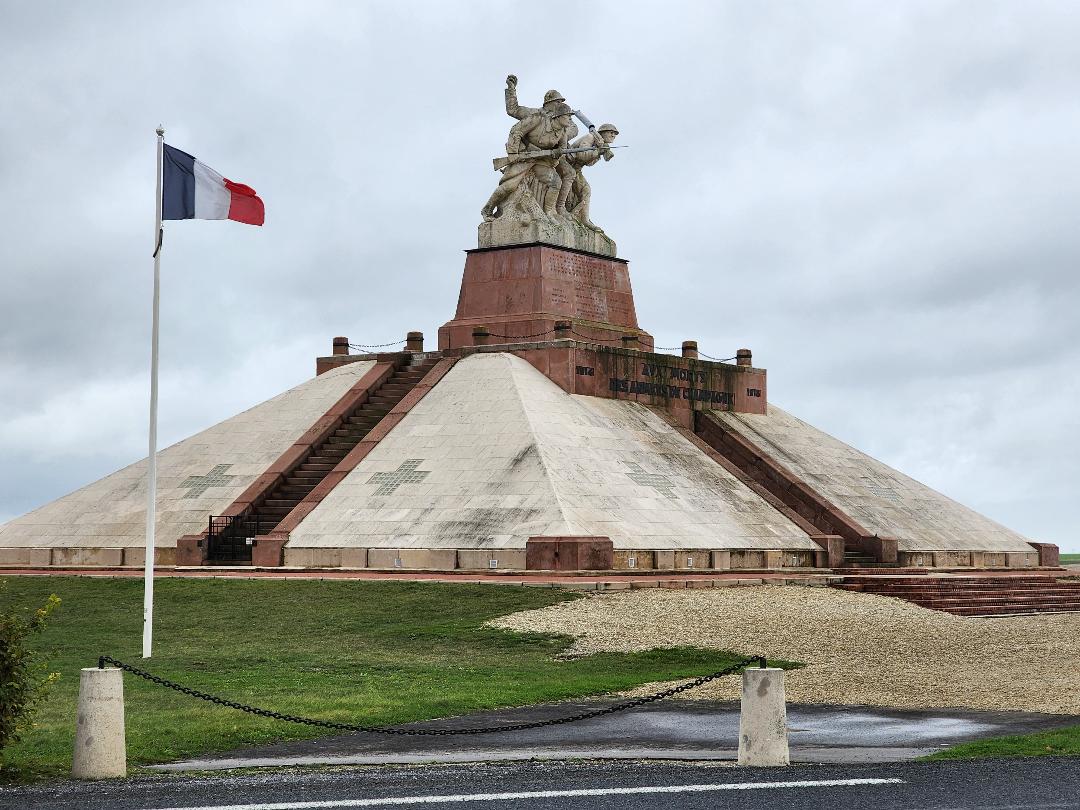
“To be able to say when this war is finished, I belonged to the SECOND DIVISION, I fought with it at the Battle of Blanc Mont Ridge, will be the highest honor that can come to any man.”
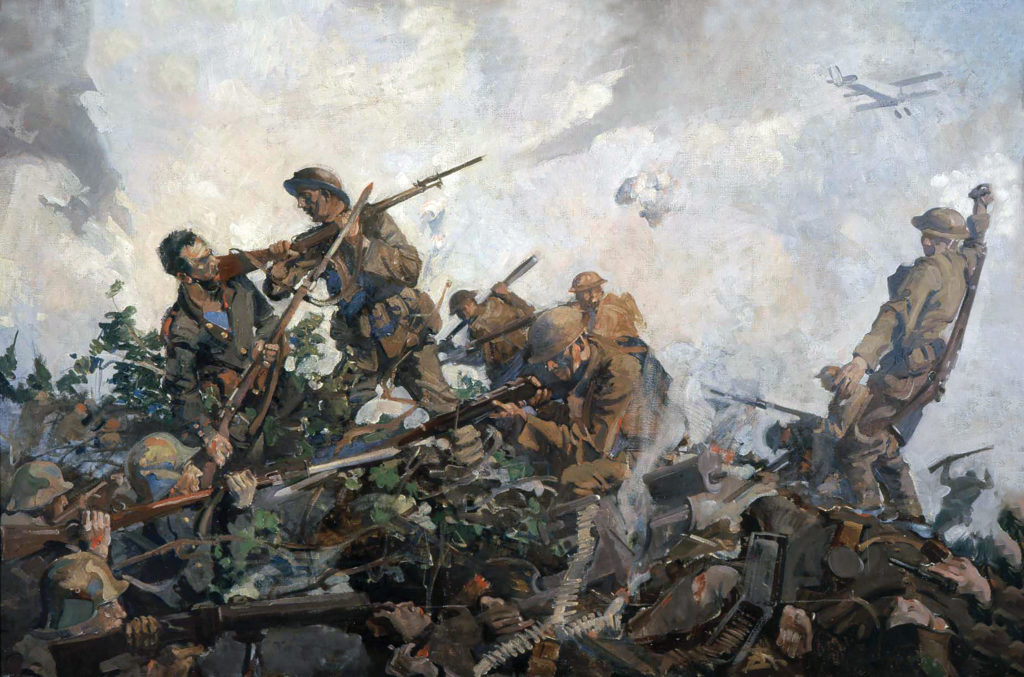
☆ — JOHN A. LEJEUNE, Major General, U.S.M.C. ☆ [Ed. - He was the second Marine officer to hold an Army divisional command, Marine Brigadier General Charles A. Doyen having previously commanded the 2nd Infantry Division (2ID) for two weeks. Lejeune commanded the US Army 2nd Division for the remainder of the war. Lejeune stated his philosophy as "The key to combat effectiveness is unity – an esprit that characterizes itself in complete, irrevocable, mutual trust. Now my infantry trusts my artillery and engineers, and my artillery and engineers know this so they will go through hell itself before they let down the infantry. My infantry believe that with such support they are invincible-and they are." French Marshal Pétain praised Lejeune as "a military genius who could and did do what the other commander said couldn't be done."]
#3) The Start of the Battle of Verdun - 11/08/2022
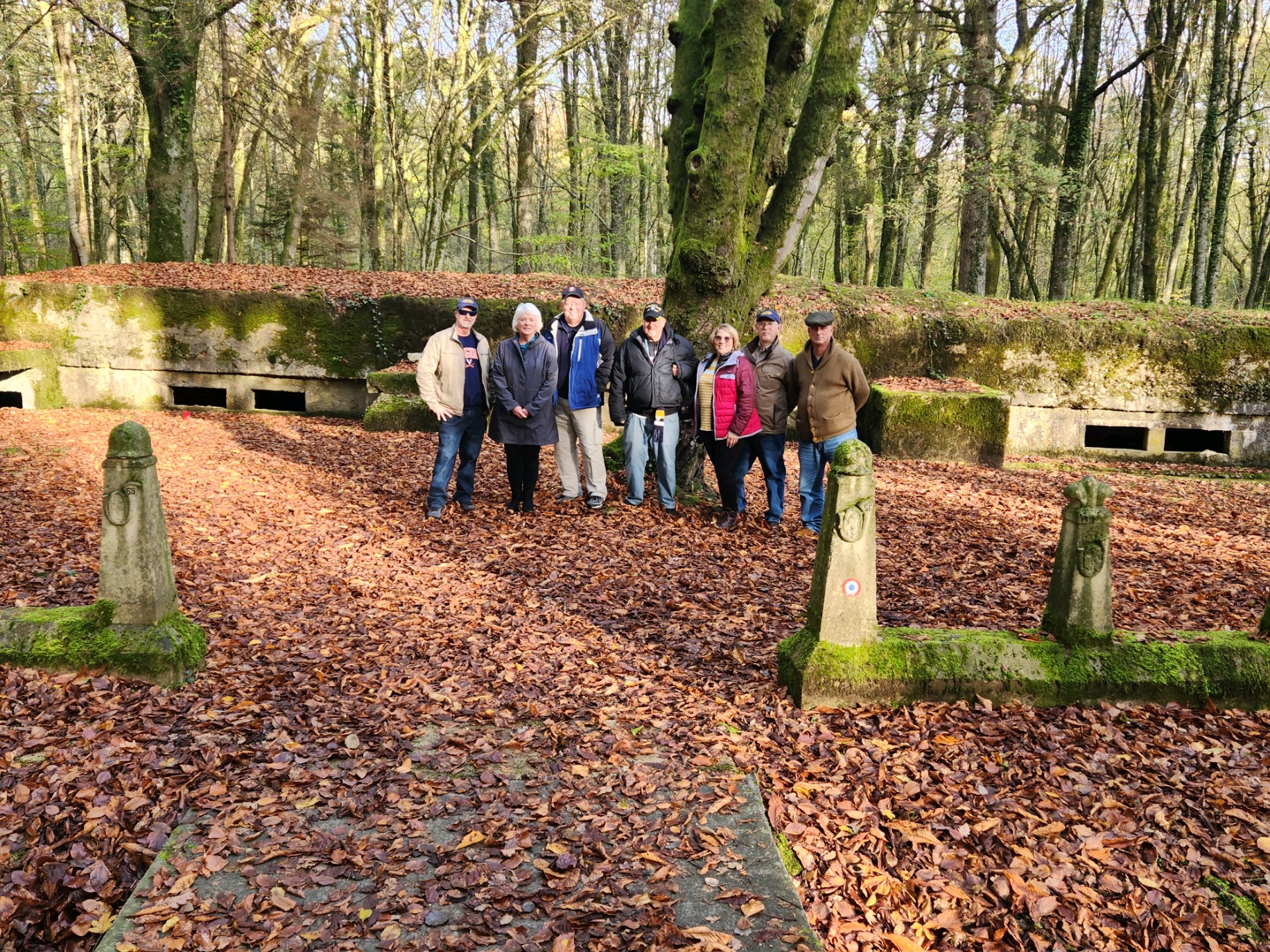
We arrived in Verdun last night and checked into the Les Jardins du Mess hotel, our home for the next two nights. This 19th century structure was originally the officers’ mess for the French Army. It suffered severe damage during the Battle of Verdun. After the war it was rebuilt and repurposed. It is an elegant hotel, located on the Meuse River, in the heart of the center of Verdun. A nice place.
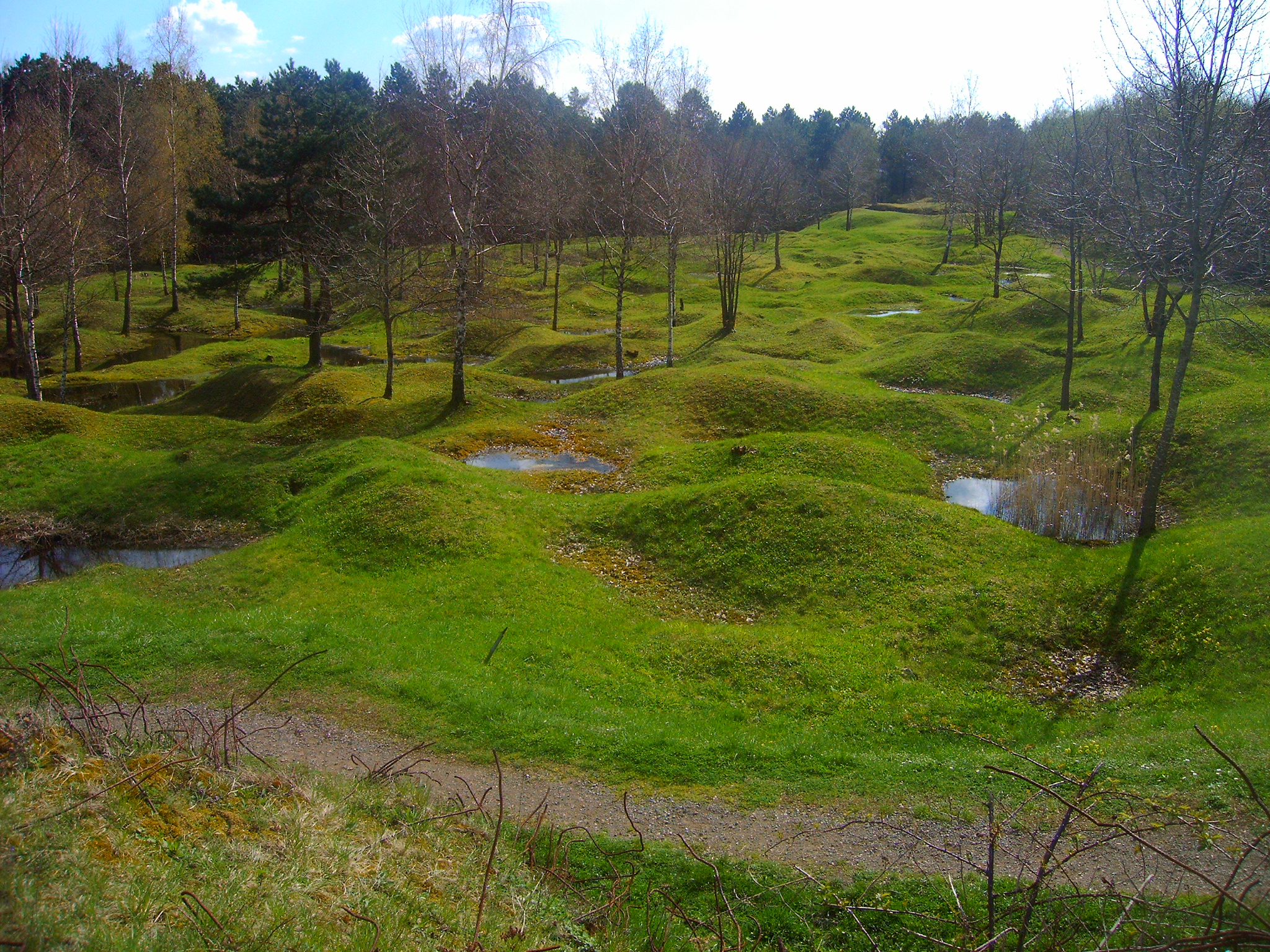
We began the day by touring various sites where the Germans began their assault on Verdun. This battle was fought from 21 February to 18 December 1916. It was the longest battle of WWI. The French suffered between 379,000 and 400,00 casualties and the German casualties were between 336,000 and 355,000. The German strategy was to “bleed France white.” This was not to be the case.
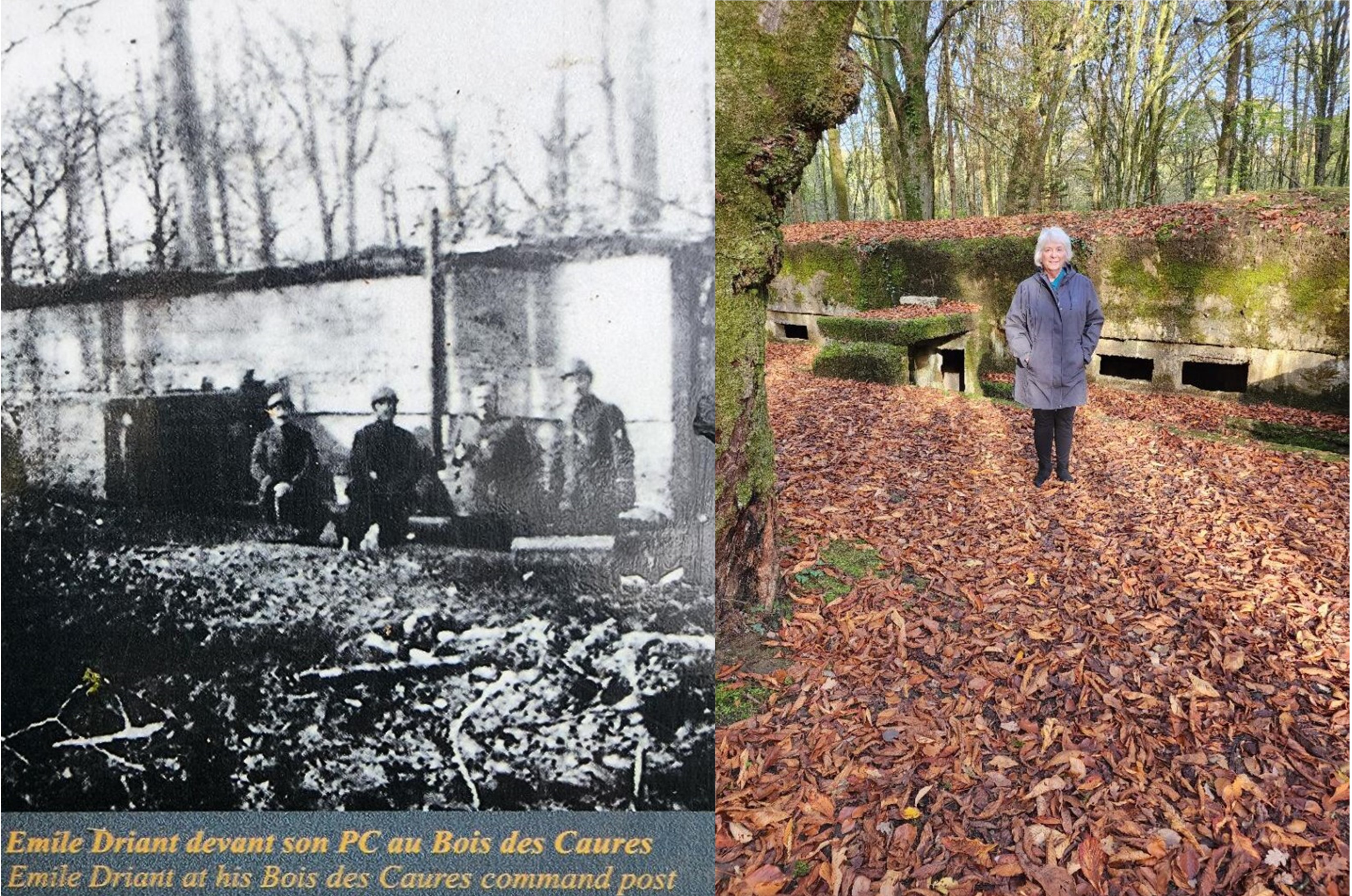
We visited the location where the first shots were fired on the French defenses, commanded by French Lieutenant Colonel Émile Driant. He commanded 1200 Chasseurs (light infantry.) The first shell landed at 0700 on 21 February and the fight began. The Germans felt this fight would be over in a couple of hours. The Chasseurs were outnumbered and outgunned, yet they held the Germans off for two days. When the fight ended, the Chasseurs had 100 men left alive. Lt.Col. Driant was among the KIA.
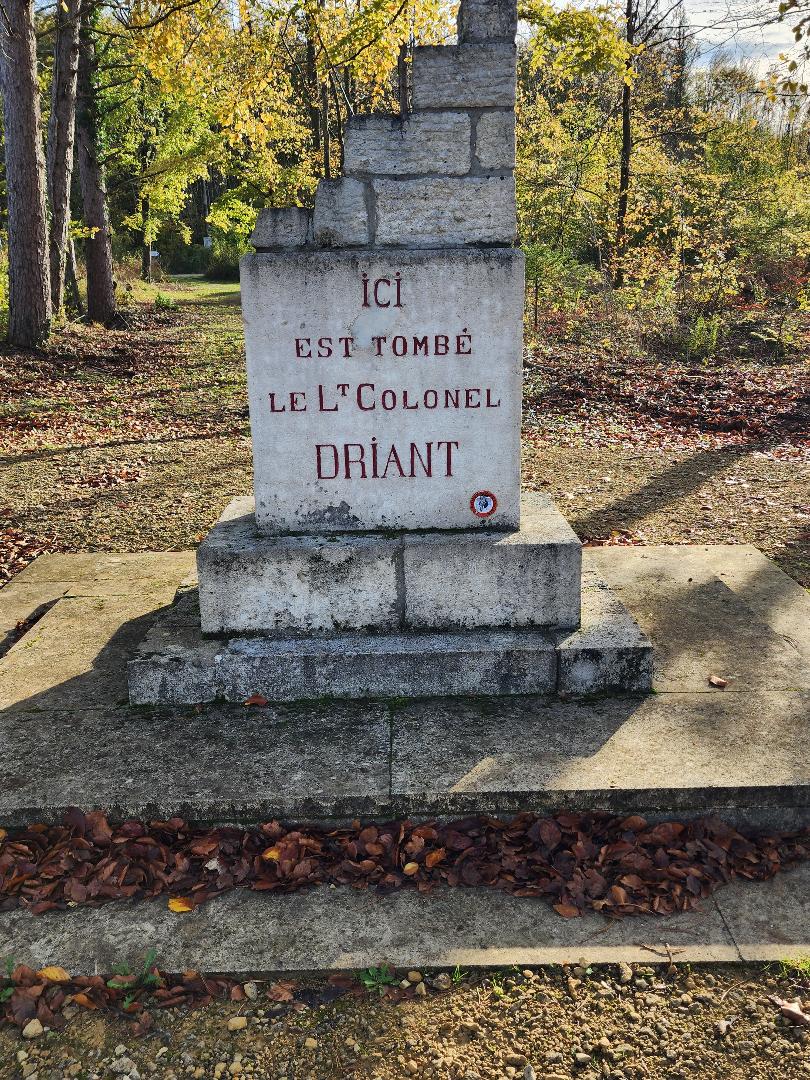
By stopping the German advance for two days, it gave the French enough time to bring reinforcements into the Verdun area and avoid a breakthrough by the German army. It is called the “Battle of Bois des Caures.” A very significant battle in WWI’s longest battle. We went back into Verdun for lunch and then spent the afternoon touring Fort Douaumont and the Verdun Ossuary. The ossuary is a memorial containing the remains of both French and German soldiers who died on the Verdun battlefield. It contains the remains of at least 130,000 unidentified combatants of both nations.
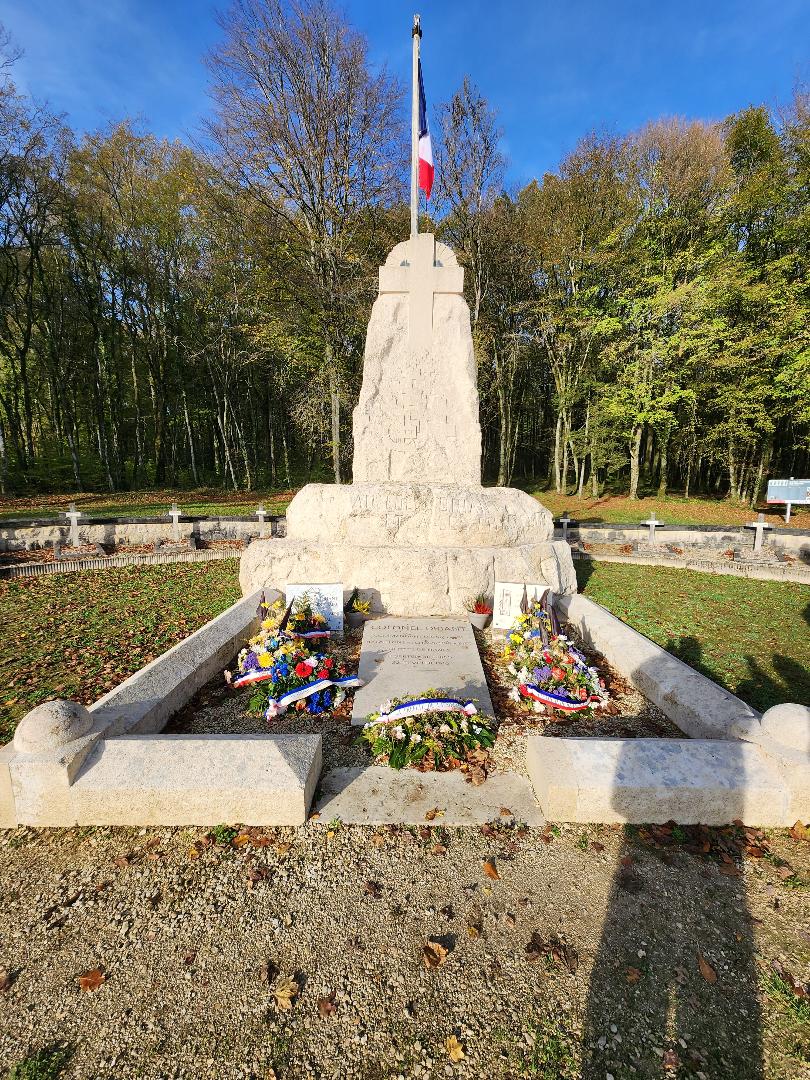
We entered Fort Douaumont and learned the history associated with the fort. It changed hands several times in 1916 between the French and the Germans. There is a crypt inside the fort that holds the remains of a number of German soldiers that were trapped during an artillery barrage. You can read about this all day long, but until you walk the ground, you cannot imagine the magnitude of the battle and what the conditions were for the combatants.
We went back to Verdun, where we had a group meal at a very nice French restaurant. A good night’s rest and tomorrow we will travel to the Meuse-Argonne battlefield. Kudos to our tour leader, James White, and our historian Steven Girard. They make history come alive.
#4) Meuse-Argonne 11/09/2022
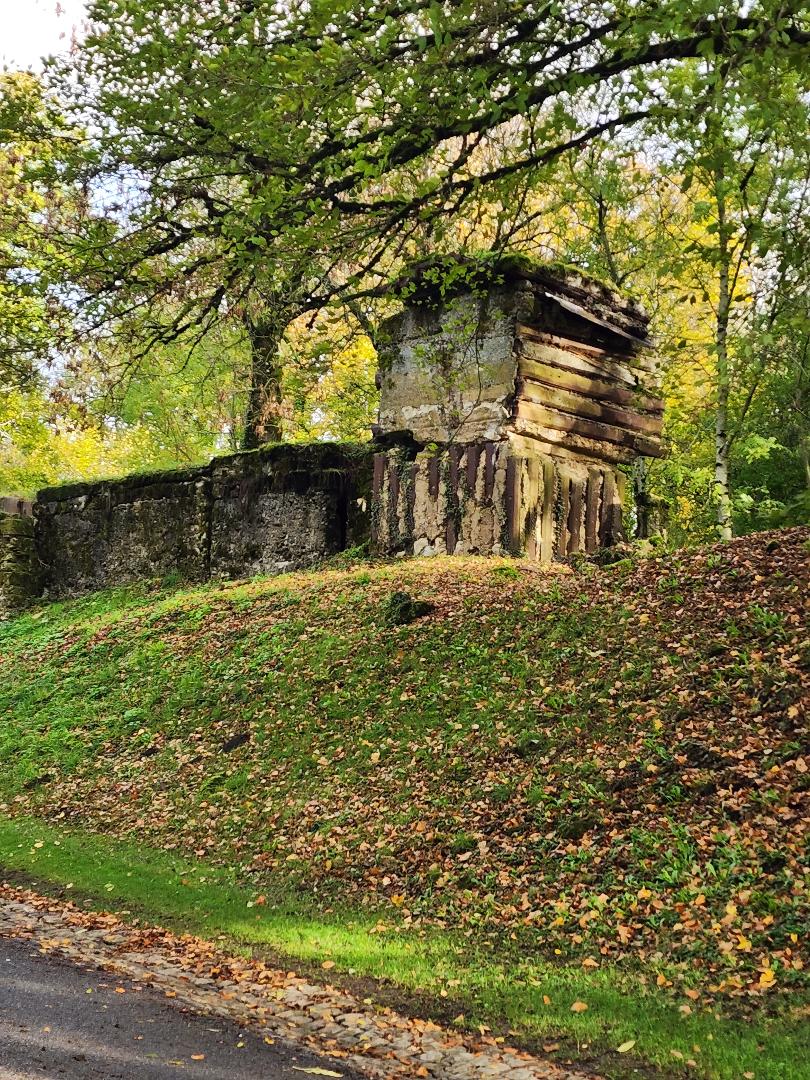
The Meuse-Argonne offensive was the largest in U.S. military history. It was also the deadliest battle in the history of the U.S. Army. This offensive lasted 47 days, from 26 September to Armistice Day on 11 November. It involved 1.2 million American soldiers and Marines, resulting in 350,000 casualties, including 28,000 German lives, an unknown number of French deaths, and 26,277 American deaths. This sacrifice resulted in the end of the Great War. It is thought in many circles, that this war was a prelude to WWII.
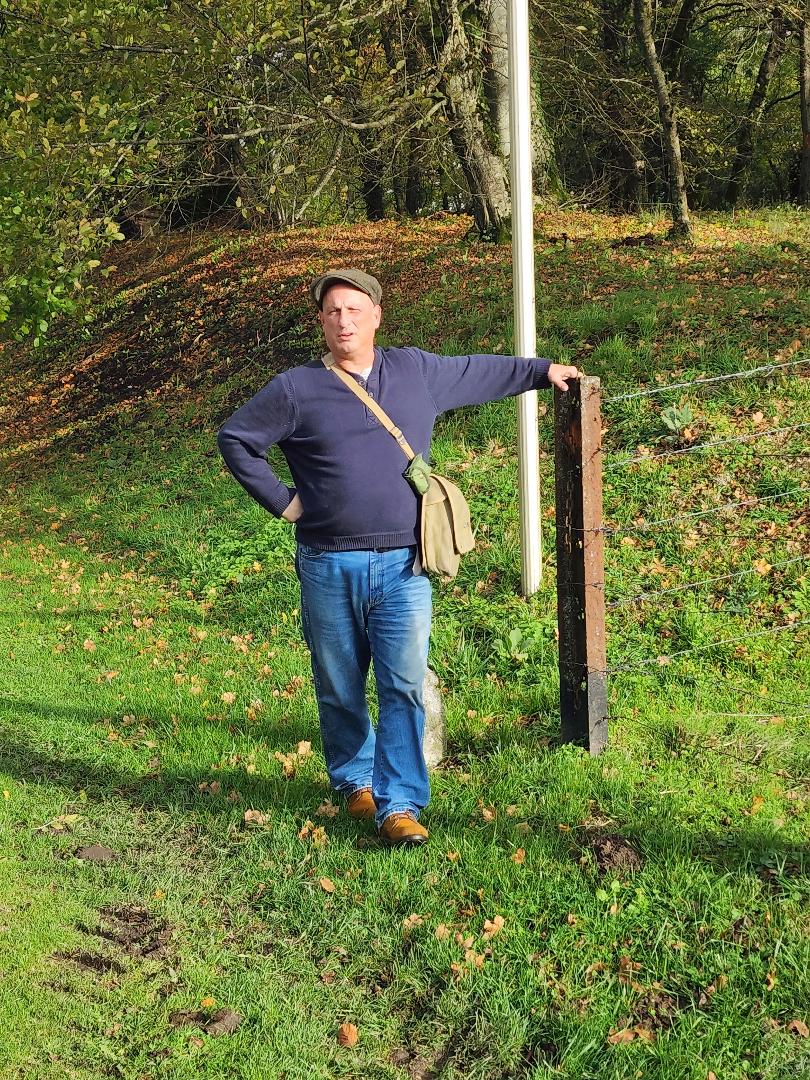
Steven Girard, our historian, walked us through the battle. We toured the central portion of the battlefield and stopped at the monument on top of Montfaucon. General John Pershing, US Army, Commander AEF, intended the American monument at Montfaucon be the most imposing WWI American monument in Europe. Afterwards, we visited the Meuse-Argonne American Cemetery at Romagne. This is the largest American cemetery in Europe. A total of 14,246 Americans are interred here.
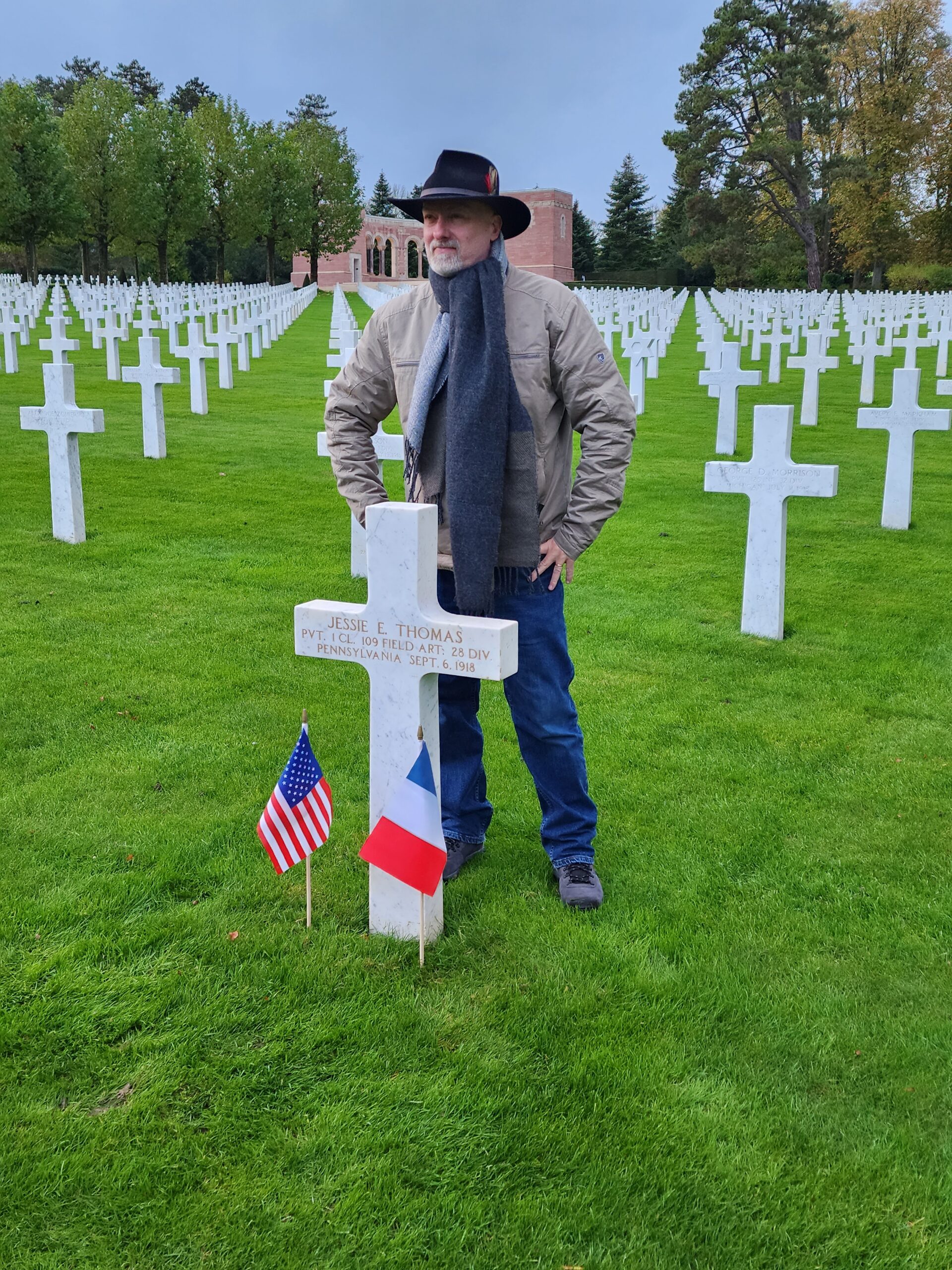
MHT’s James White said most of those buried here, lost their lives in the Meuse-Argonne Offensive. There is a visitors’ center that explains the significance of the Meuse-Argonne Offensive as it fits in WWI. There are nine Medal of Honor recipients buried here. Pictures do not do justice to the enormity of rows, upon rows, of the American burial plots located here. After touring a private museum with artifacts from the battlefield, we went to the jump off line where the Hindenburg Line
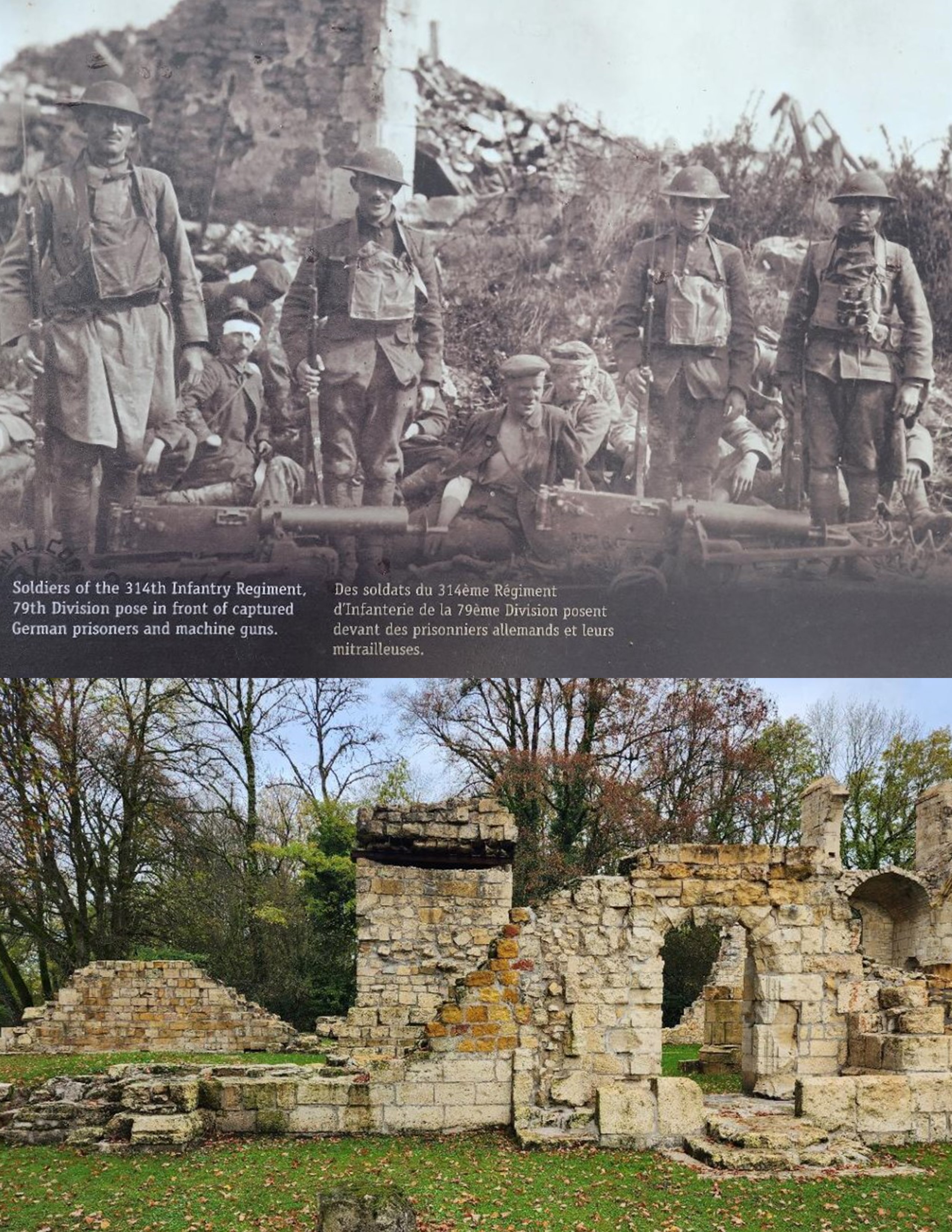
[Ed. - Field Marshal Paul von Hindenburg and General Erich Ludendorff deduced the German Army's huge salient between the valley of the Somme and Laon in France was obviously vulnerable to a pincer attack, which indeed the French were planning. The new “Hindenburg” defensive line was established across its base using new techniques of defense in depth established in their “Textbook of Defensive Warfare.” They authorized Operation “Alberich” whereby German forces destroyed every building, leveled all roads and bridges, cut down every tree, fouled every well, and burned every combustible. In 39 days, the Germans withdrew from a 1,000 square mile area, more ground than they had lost to every Allied offensive since 1914. The cautiously following Allies found scorched earth before a frontline that was 26 miles shorter freeing-up 14 German divisions.]
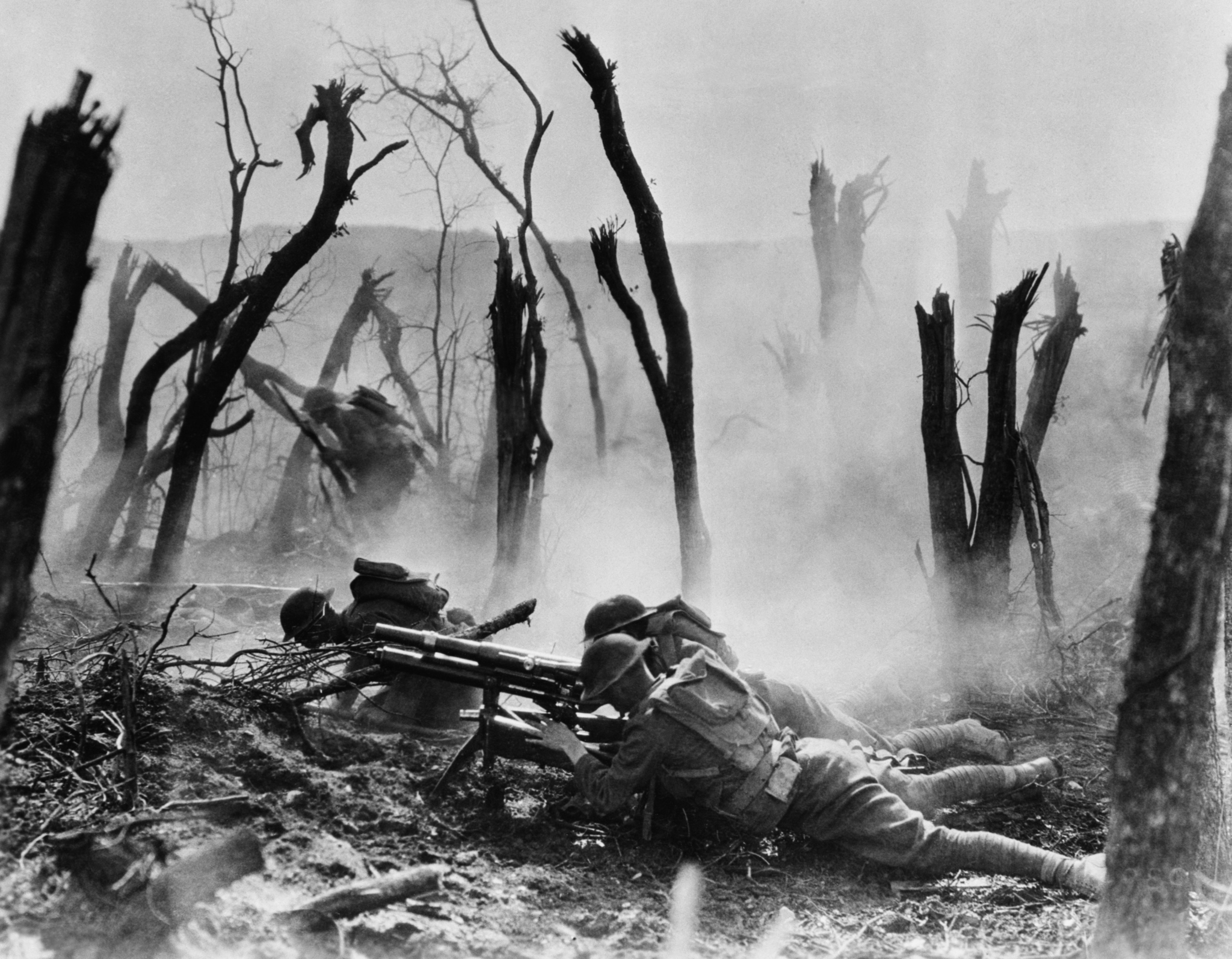
was smashed and then followed the line of attack of the Marine Brigade as they drove north. Our last stop was at the Meuse River to the spot where, on the night of November 10th, where elements of the 5th Marine Regiment crossed the river on a footbridge under heavy fire. All firing ceased the next morning at 11/11/1918 at 11:00 AM.

We returned to Reims for a group dinner and celebrated the Marine Corps 247th birthday. Champagne anyone? Tomorrow will be a busy day. We will leave Reims in the morning and travel to the Belleau Wood Battlefield.
#5) Belleau Wood 11/10/2022
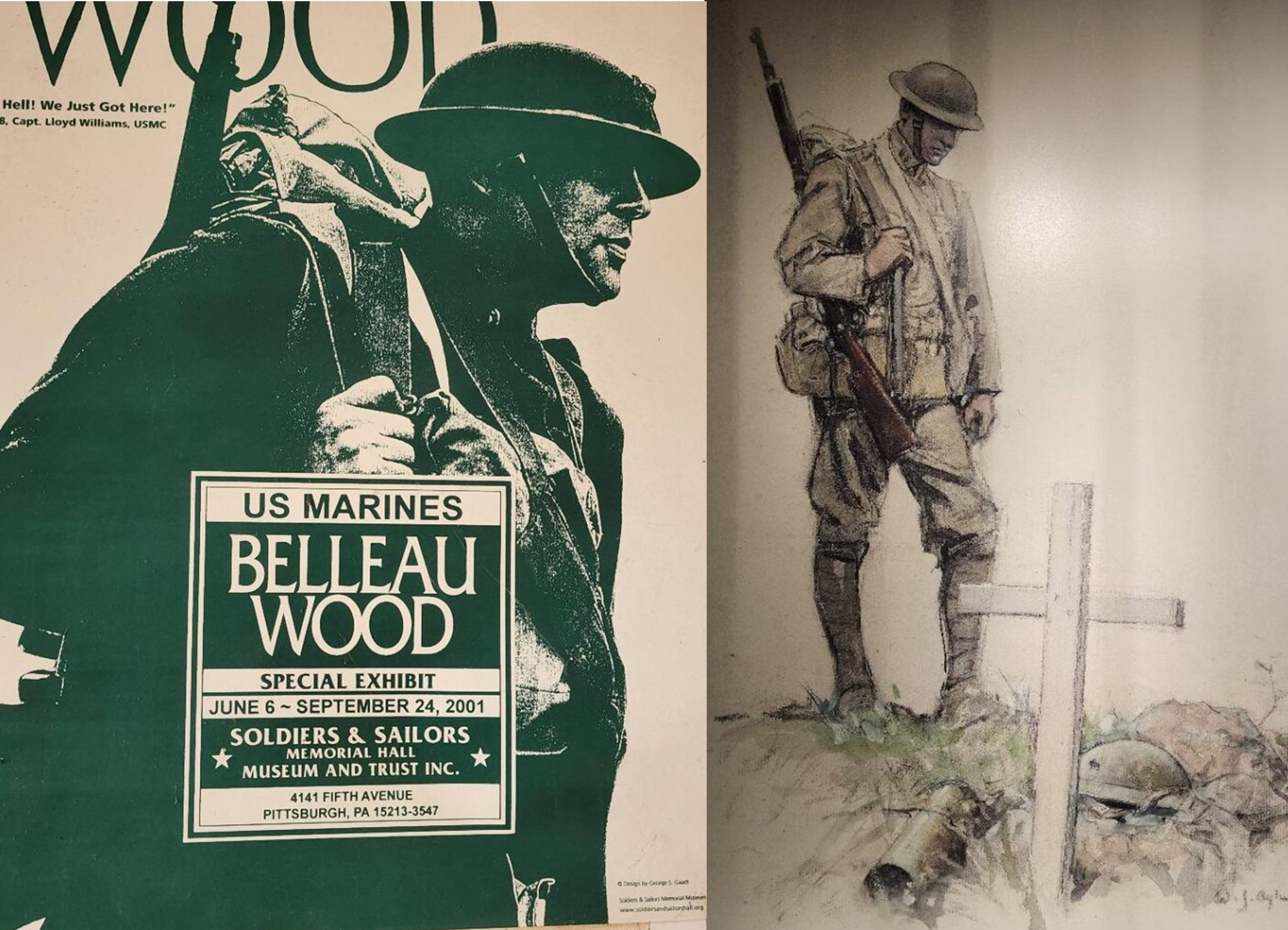
On 6 June 1918, the Battle of Belleau Wood began and raged for three more weeks, during that time more Marines died than during all previous U.S.M.C. battles combined. This battle consisted of 2 U.S. Army divisions, 1 brigade of the U.S. Marines, French 6th army, and elements of the British IX Corps. They were up against 5 German divisions. This was the German Spring Offensive. The Germans had hoped to defeat the Allies before the U.S. could be fully engaged in the war. The Germans forced the French to retreat and the 5th Marines were called to plug the hole. The French urged the Marines to turn back and this is where Marine Captain Lloyd Williams uttered his famous retort, “Retreat? Hell, we just got here.” The Allies launched an attack on the German lines at dawn 6 June with the 1st Battalion, 5th Marine Regiment to attack Hill 142, but only two companies were in position. The Marines advanced in waves with bayonets fixed across an open wheat field that was swept with German machine gun and artillery fire, and many Marines were cut down. At 1700 (5 PM) on 6 June, the 3rd Battalion, 5th Marines and the 3rd Battalion, 6th Marines (3/6) advanced from the west into Belleau Wood as part of the second phase of the Allied offensive. Again, the Marines had to advance through a waist-high wheat field into machine gunfire. One of the most famous quotations in Marine Corps history came during the initial step-off for the battle when First Sergeant Dan Daly, a recipient of two Medals of Honor, prompted his men of the 73rd Machine Gun Company forward with the words: “Come on, you sons of bitches. Do you want to live forever?”
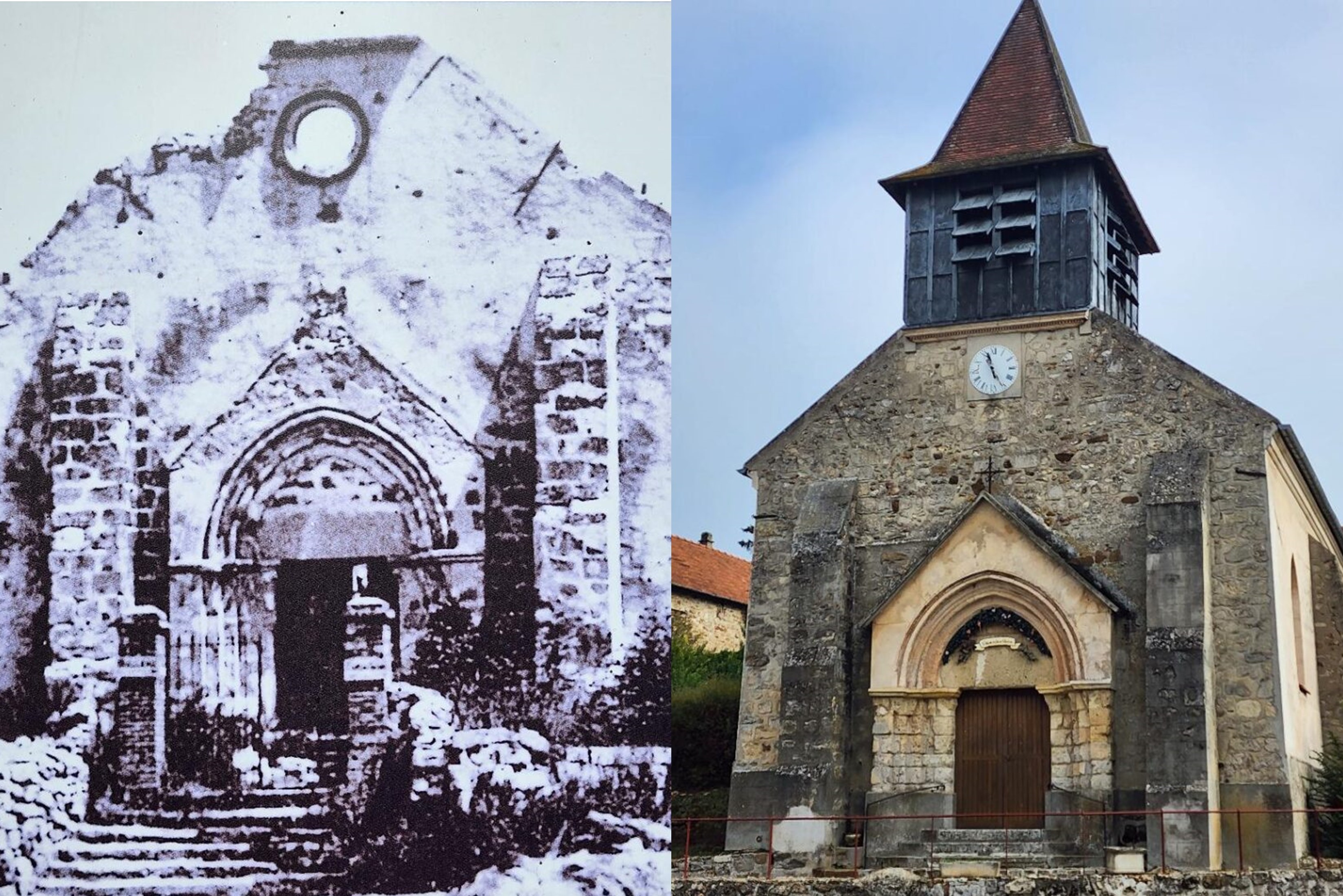
The first waves of Marines were slaughtered. On the right, 3/6 swept into the southern end of Belleau Wood and encountered heavy machine gunfire, sharpshooters, and barbed wire. Marines and German infantrymen were soon engaged in hand-to-hand fighting. The casualties sustained on this day were the highest in Marine Corps history up to that time. Some 31 officers and 1,056 men of the Marine brigade were casualties. However, the Marines now had a foothold in Belleau Wood.
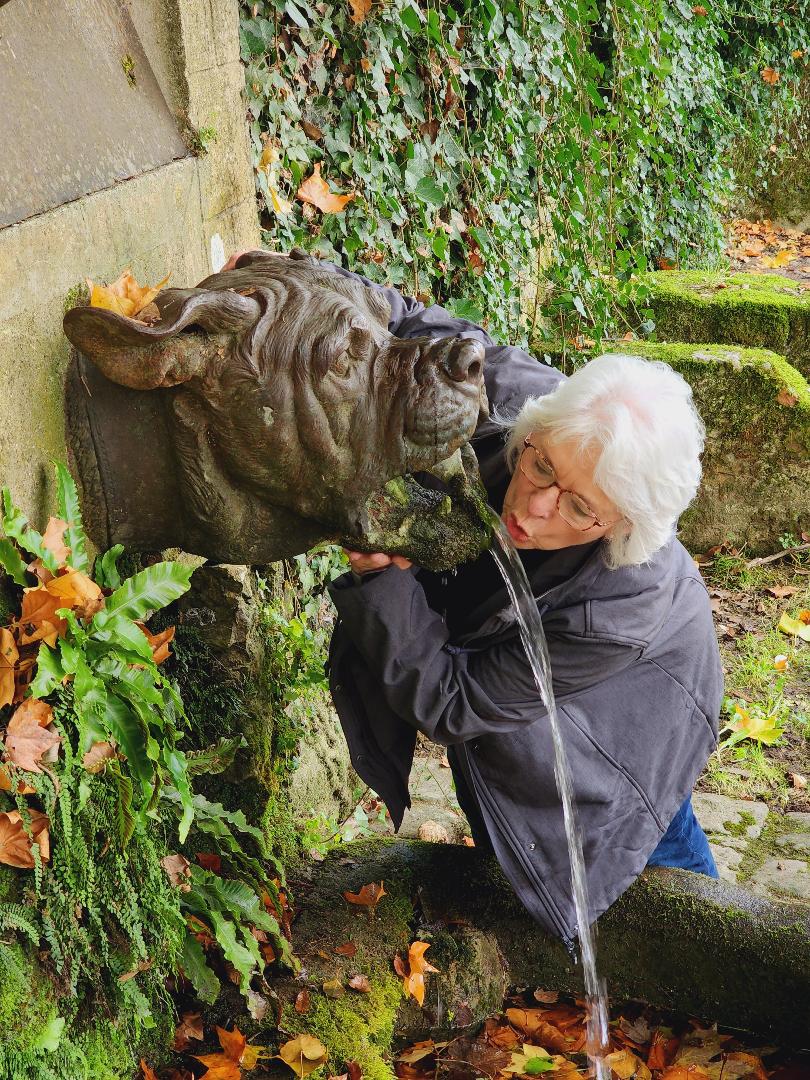
Linda drinks from The Bulldog Fountain in Belleau where the nickname "Teufel Hunden" ("Devil Dogs" in English) was bestowed upon the Marines by the Imperial German soldiers.
As I mentioned, this battle raged for three weeks. Overall, the woods were attacked by the Marines a total of six times before they could successfully expel the Germans. They fought off parts of five divisions of Germans, often reduced to using only their bayonets or fists in hand-to-hand combat. This battle has a prominent position in the lore of the Marine Corp.
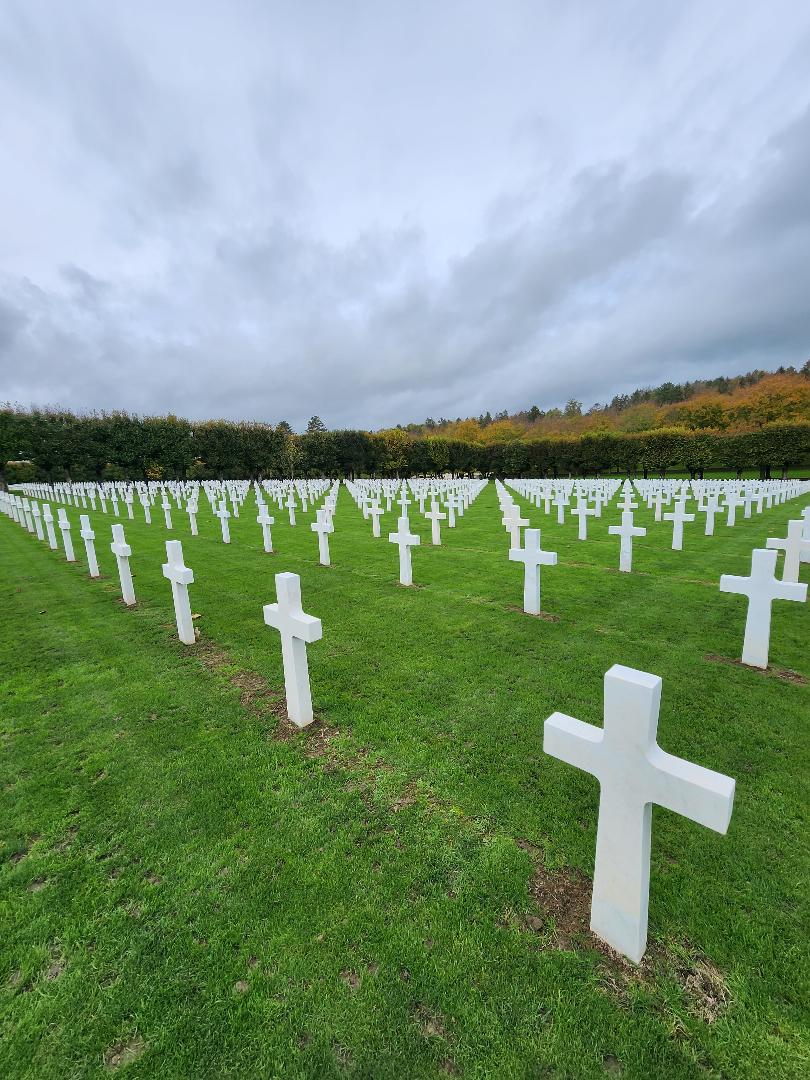
We walked through the forest of Belleau Wood, we saw the wheat field, and we visited the Aisne-Marne American Cemetery that contains the graves of 2,289 of AEF war dead, most of whom perished in Belleau Wood. When we ended our visit here, we headed back to Paris. Our trip back was uneventful, until, we got in the Paris traffic. We spent three hours stuck in traffic, because of a transportation strike. Finally got to our hotel about 9:30 PM.
#6) Armistice Day 11/11/2022
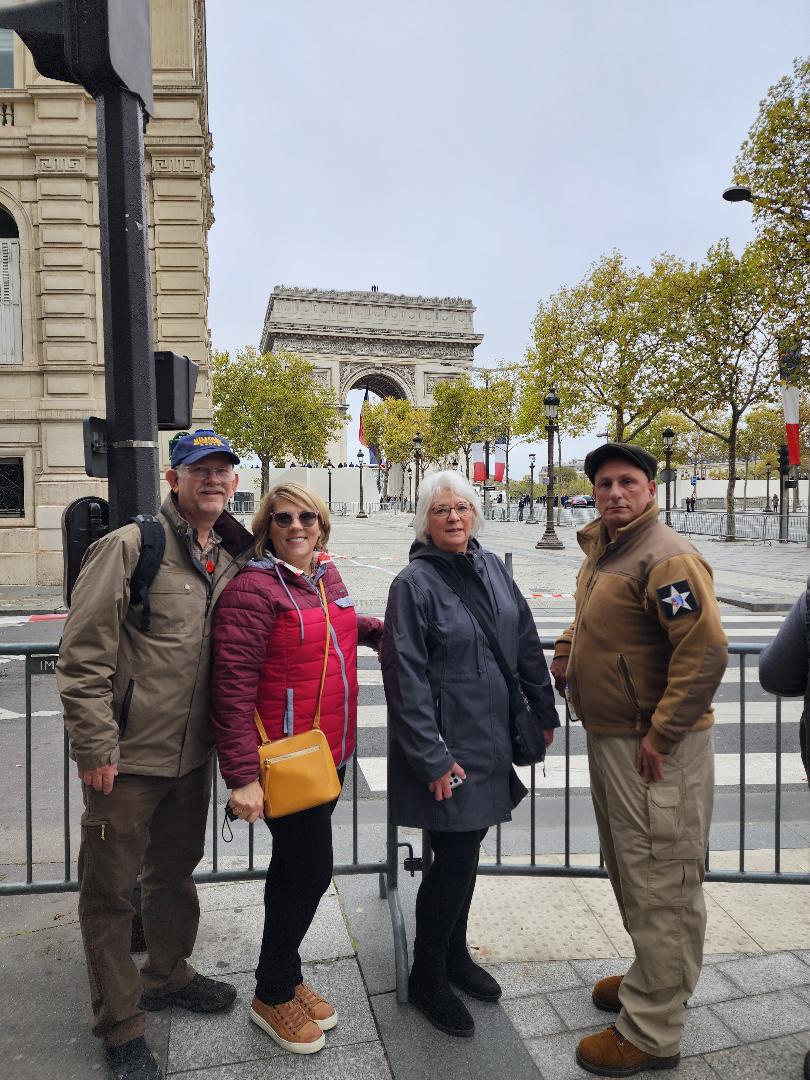
Today is the 104th Anniversary of Armistice Day. The day the war to end all wars ended. At the 11th hour on the 11th day of the 11th month of 1918, the Great War ends. At 5 AM. that morning, Germany, bereft of manpower and supplies and faced with imminent invasion, signed an armistice agreement with the Allies in a railroad car outside Compiégne, France. The First World War left nine million soldiers dead and 21 million wounded, with Germany, Russia, Austria-Hungary, France, and Great Britain each losing nearly a million or more lives each. In addition, at least five million civilians died from disease, starvation, or exposure.
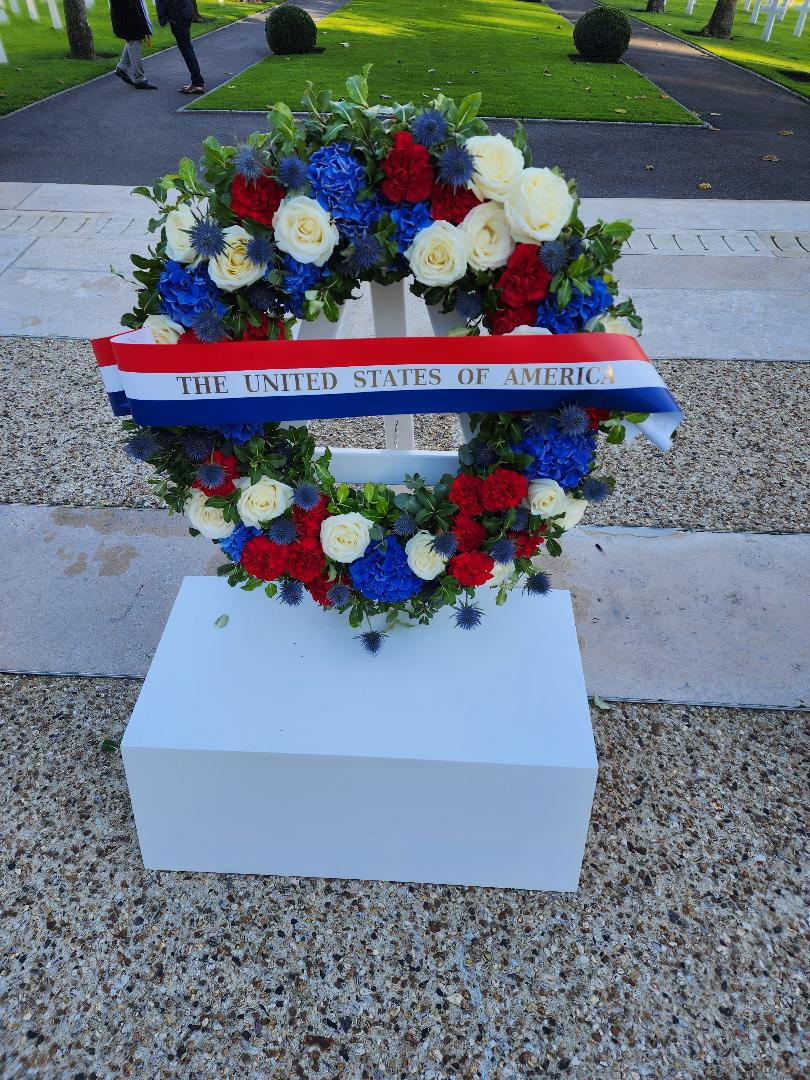
Linda and I went to the Arc de Triompe to watch France celebrate the anniversary that marked the end of WWI. Very impressive, very somber. The French would stop us and thank us for what our country did in WWI. They will never forget. This not only happened in Paris, it also happened in the other places we visited in France. After this ceremony ended, we went to the American Cemetery in Paris, where they held a Veterans’ Ceremony, honoring the U.S. veterans. Everyone stood for our flag and the Star-Spangled Banner (French included.) [Ed. – The tour visited “Harry's New York Bar” in Paris.
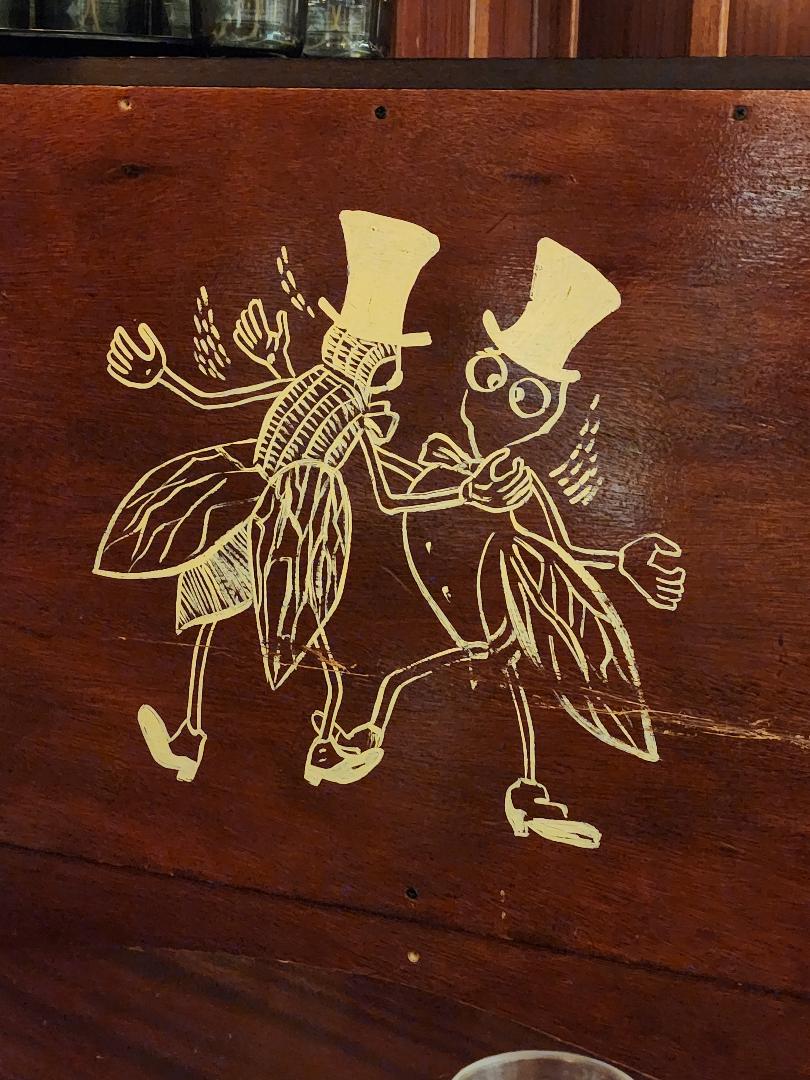
Opened in 1911, Harry's was frequented by a number of famous American expatriates and international celebrities “Bar Flys” such as Knute Rockne, Sinclair Lewis, Ernest Hemingway, Bill Tilden, Coco Chanel, Jack Dempsey, Rita Hayworth, Humphrey Bogart and occasionally the Duke of Windsor. Even 1960’s Ian Fleming short story "From a View to a Kill" had James Bond sipping a Vesper Martini shaken, not stirred at Harry's. Harry’s New York Bar is said to be the birthplace of such classic cocktails as the Bloody Mary, French 75, Sidecar and the Monkey Gland (probably not ordered as much with the outbreak of Monkey Pox.)]
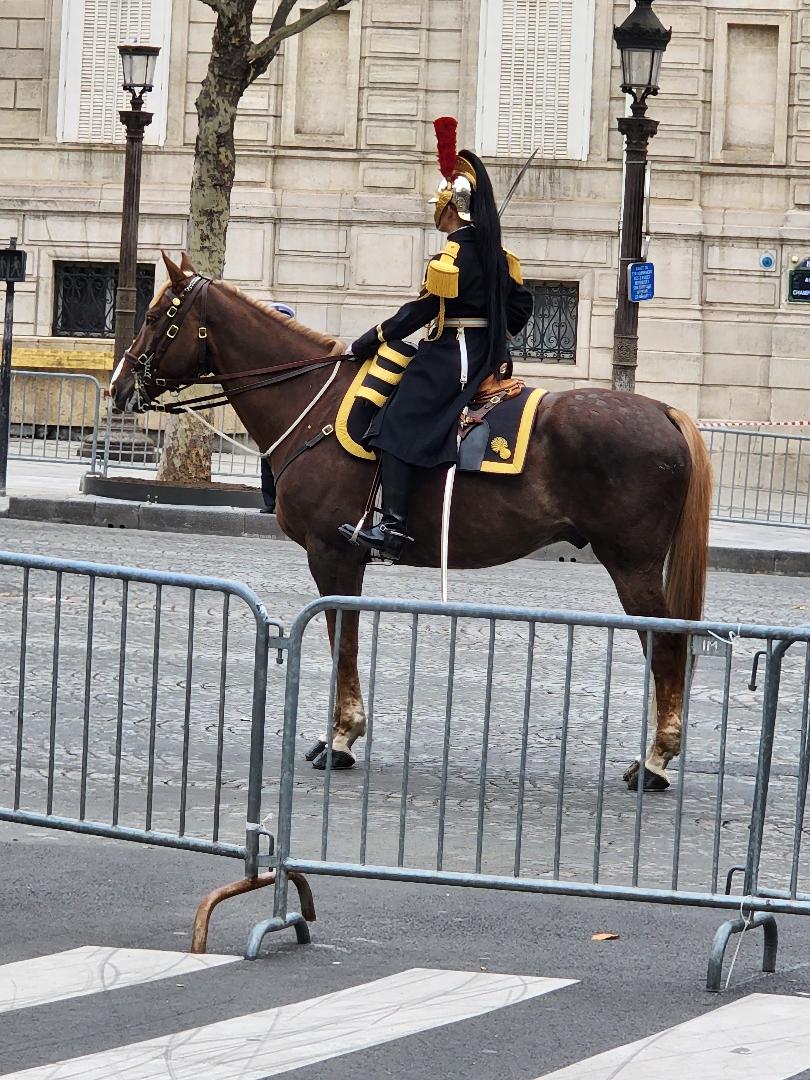
This has been a great ending to a great tour. We have made some new friends and had a great trip. James White, our tour leader and Steven Girard, our historian, went above and beyond on this trip. They were very patient, very knowledgeable, and professional. It was a fun time and a great learning experience.
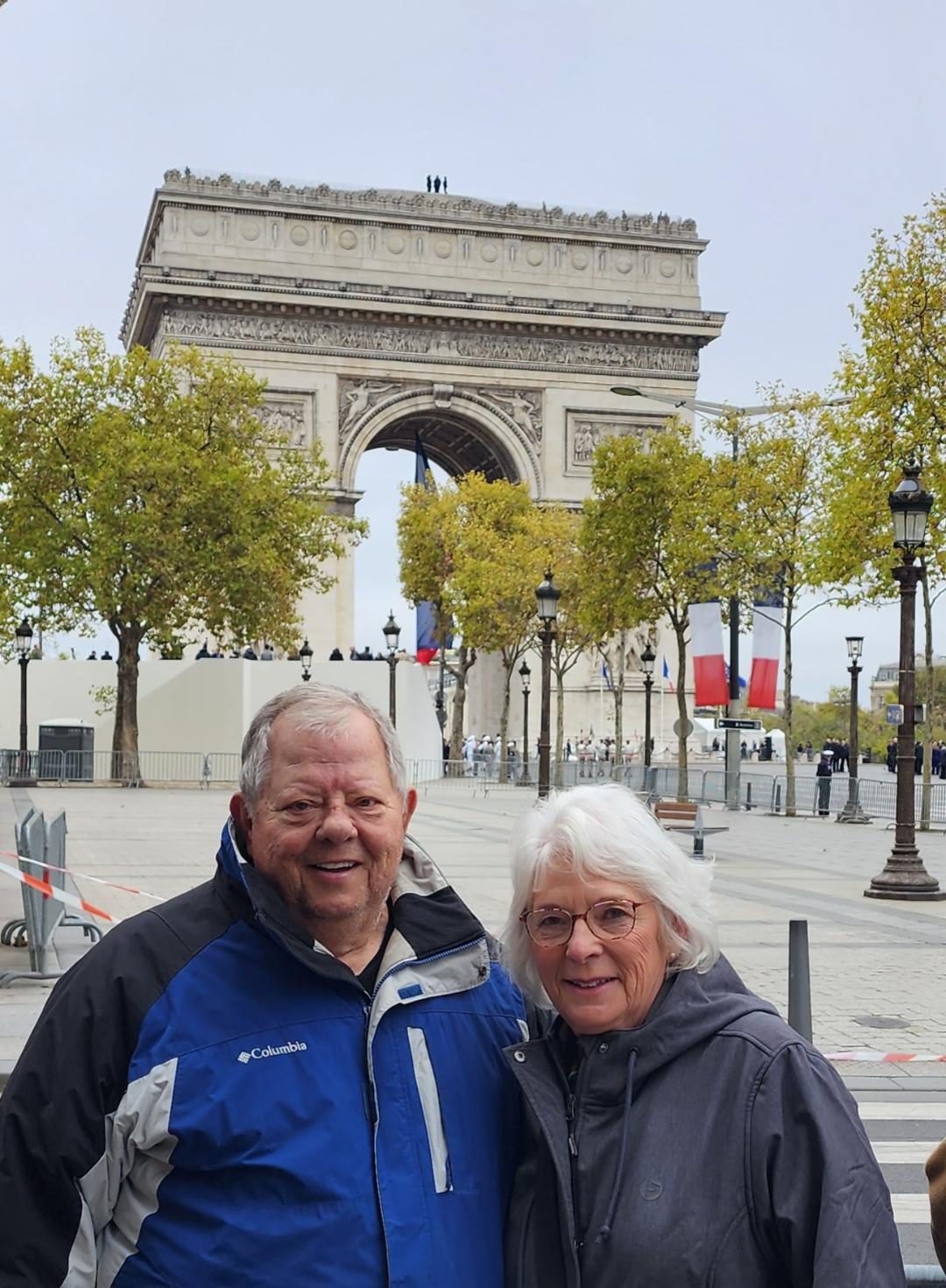
Read about Jerry & Linda’s Pre-Tour Paris Fun: France 2022 – Jerry's Journeys (jerrysjourneys.com)
La Ville-Lumière 11/01/2022 – Jerry's Journeys (jerrysjourneys.com)
Latin Quarter Exploration 11/02/2022 – Jerry's Journeys (jerrysjourneys.com)
A Rainy Day in Paris 11/03/2022 – Jerry's Journeys (jerrysjourneys.com)
A Sunny Day in Paris 11/04/2022 – Jerry's Journeys (jerrysjourneys.com)
Moving Day 11/05/2022 – Jerry's Journeys (jerrysjourneys.com)
You can walk the ground for yourself to commemorate the 105th Anniversary of The Great War! CLICK HERE

